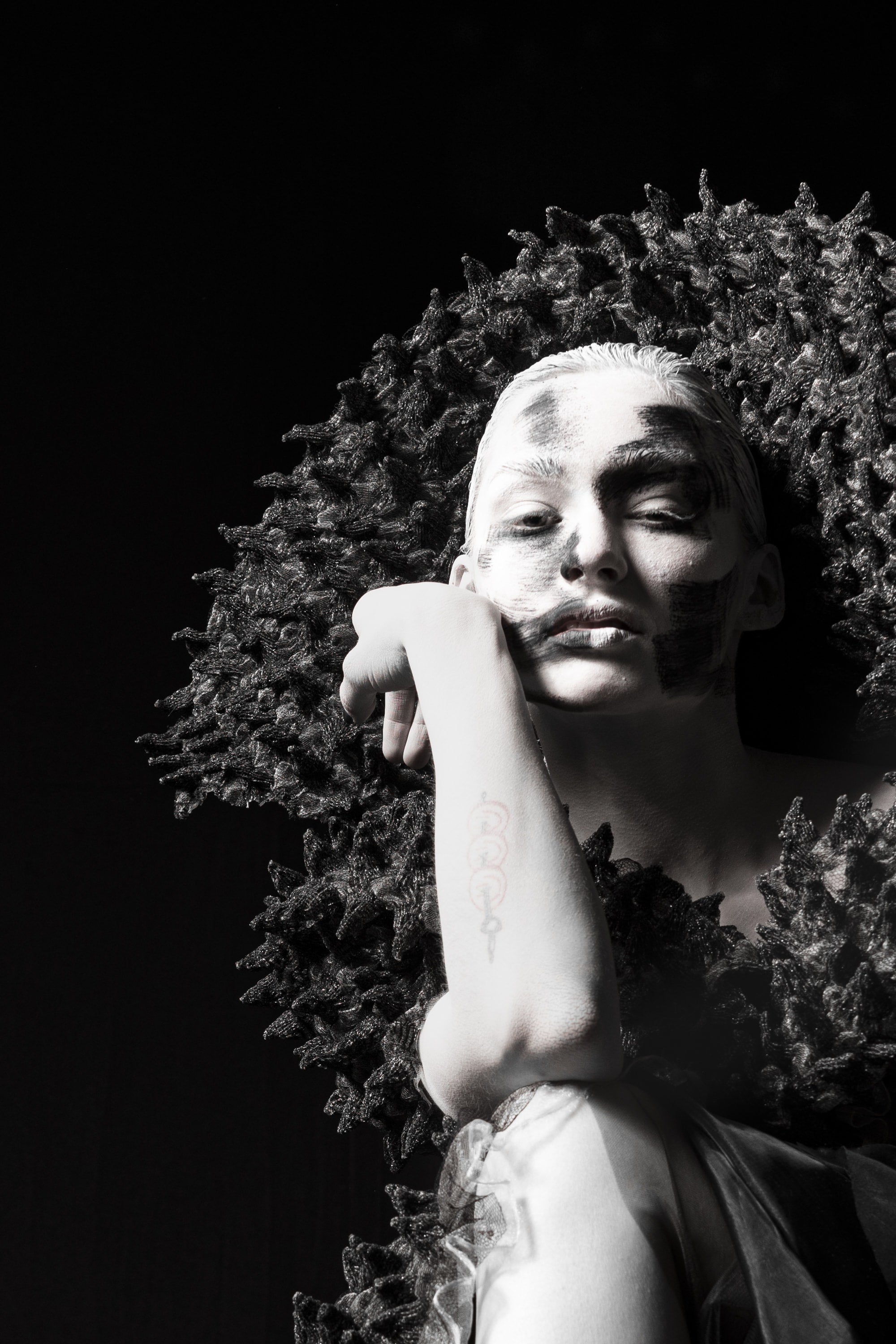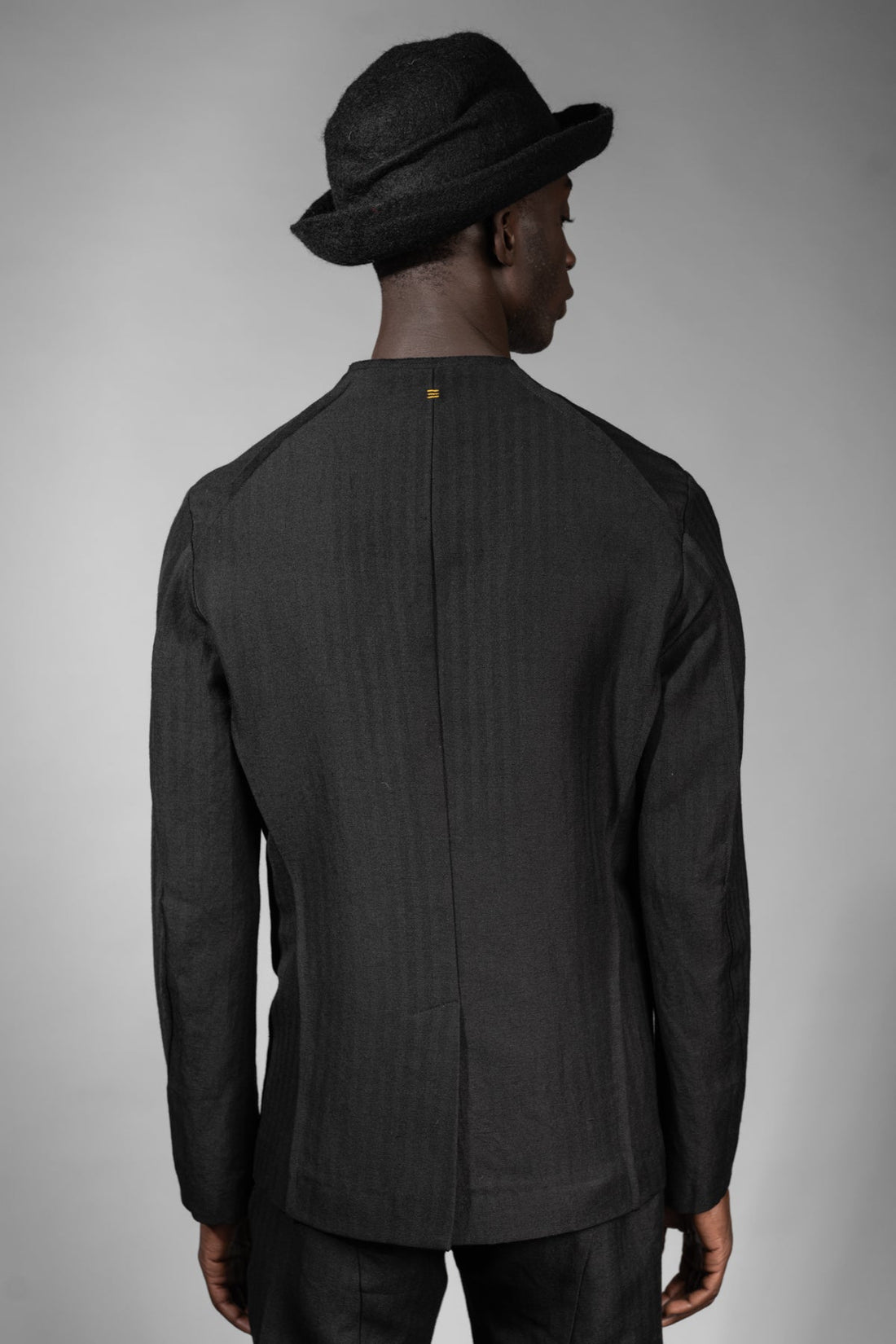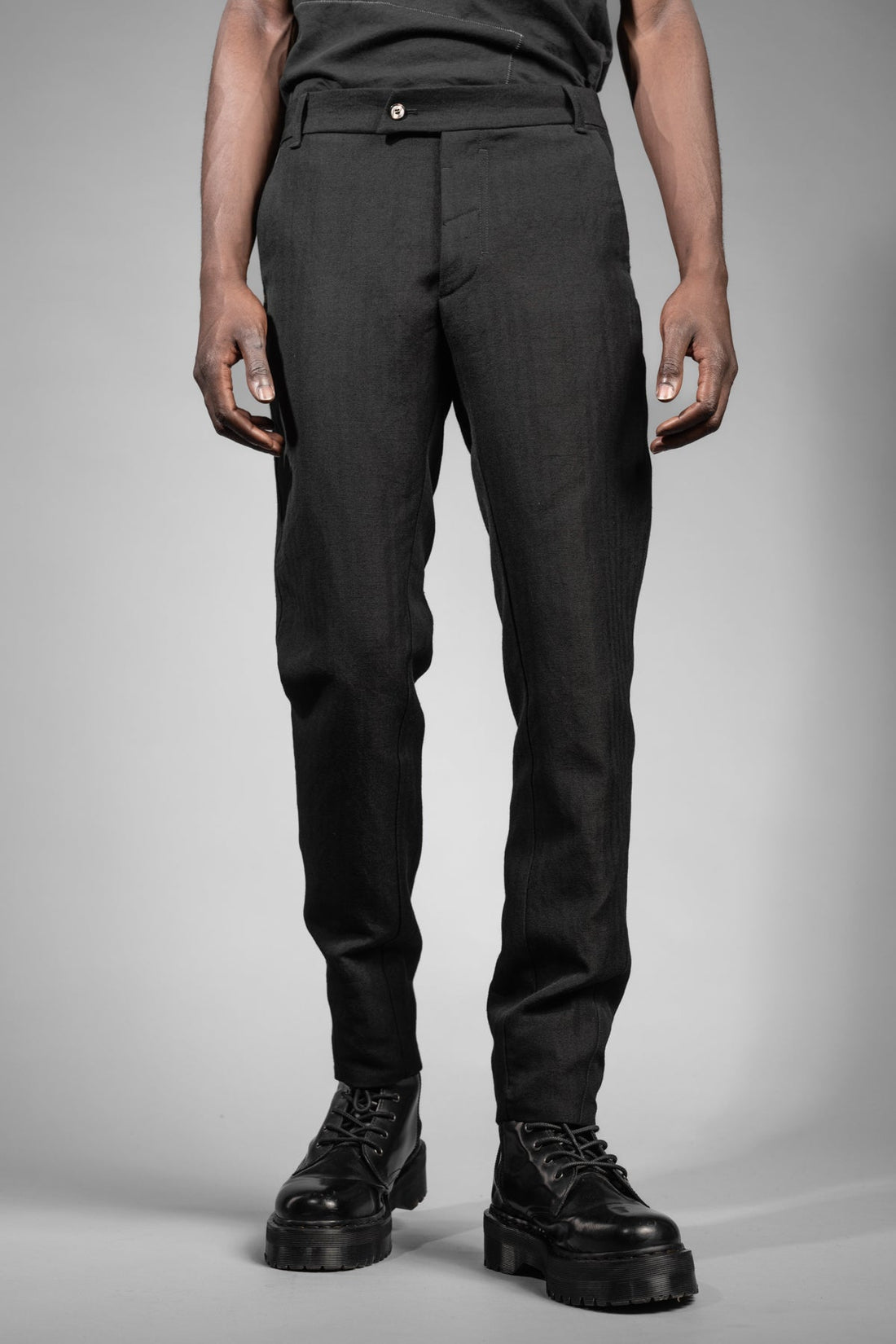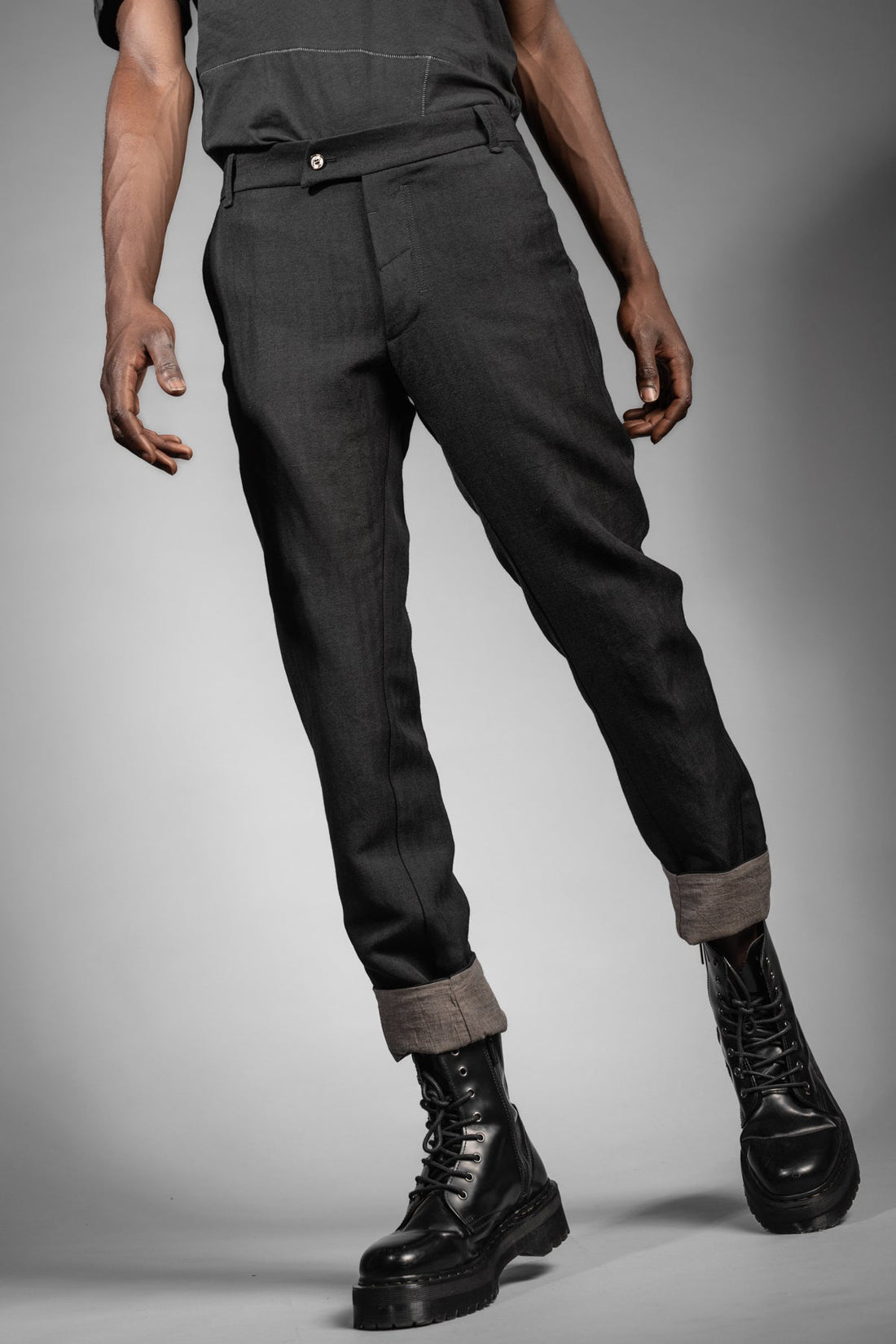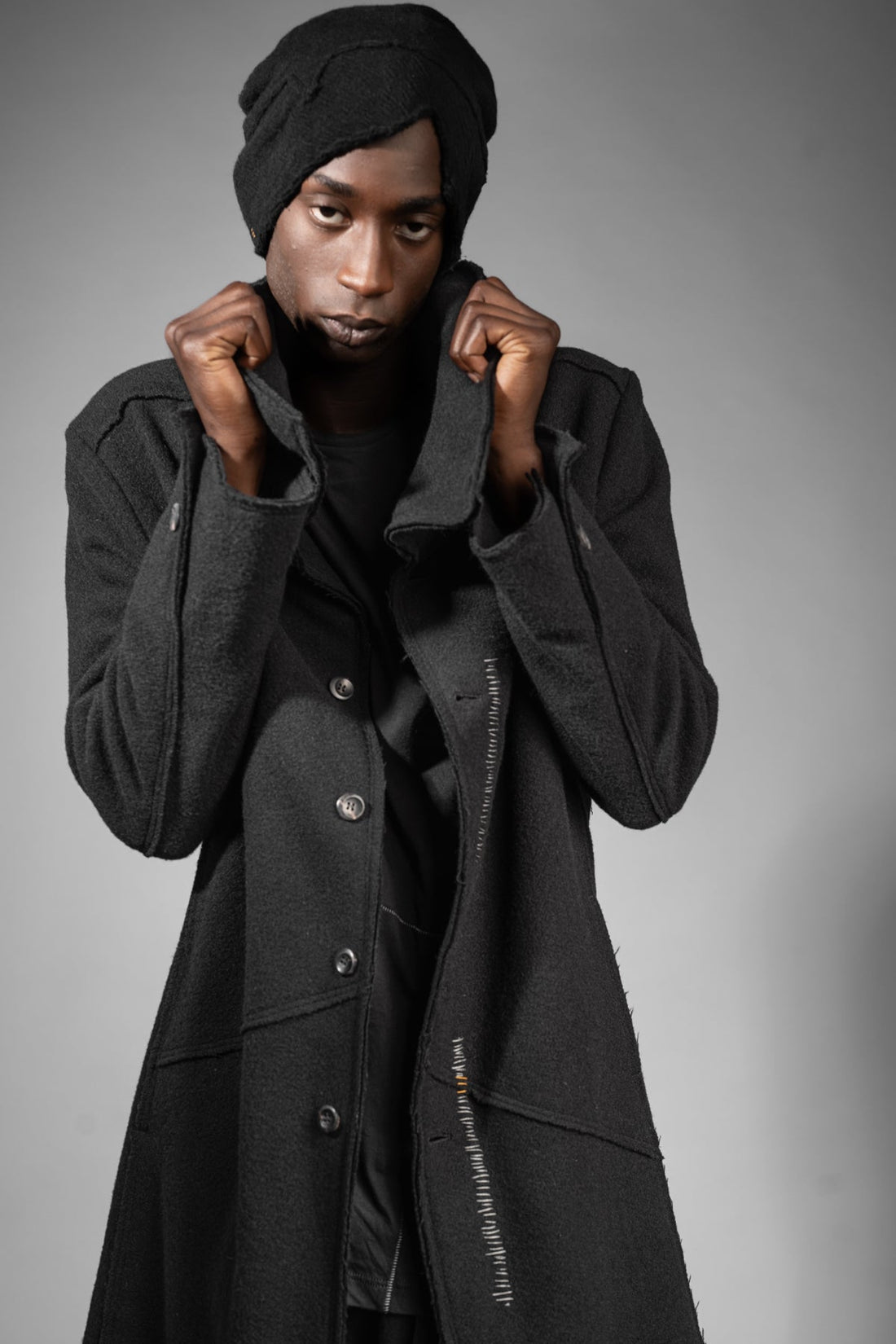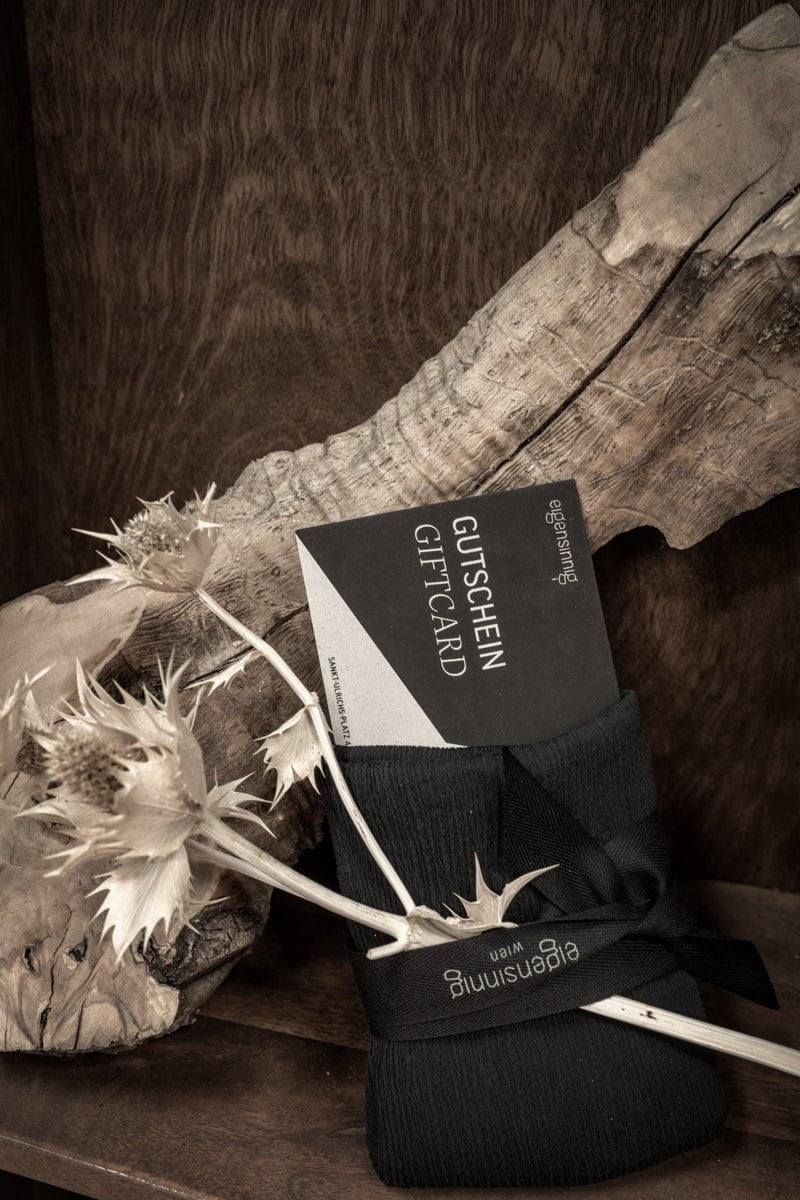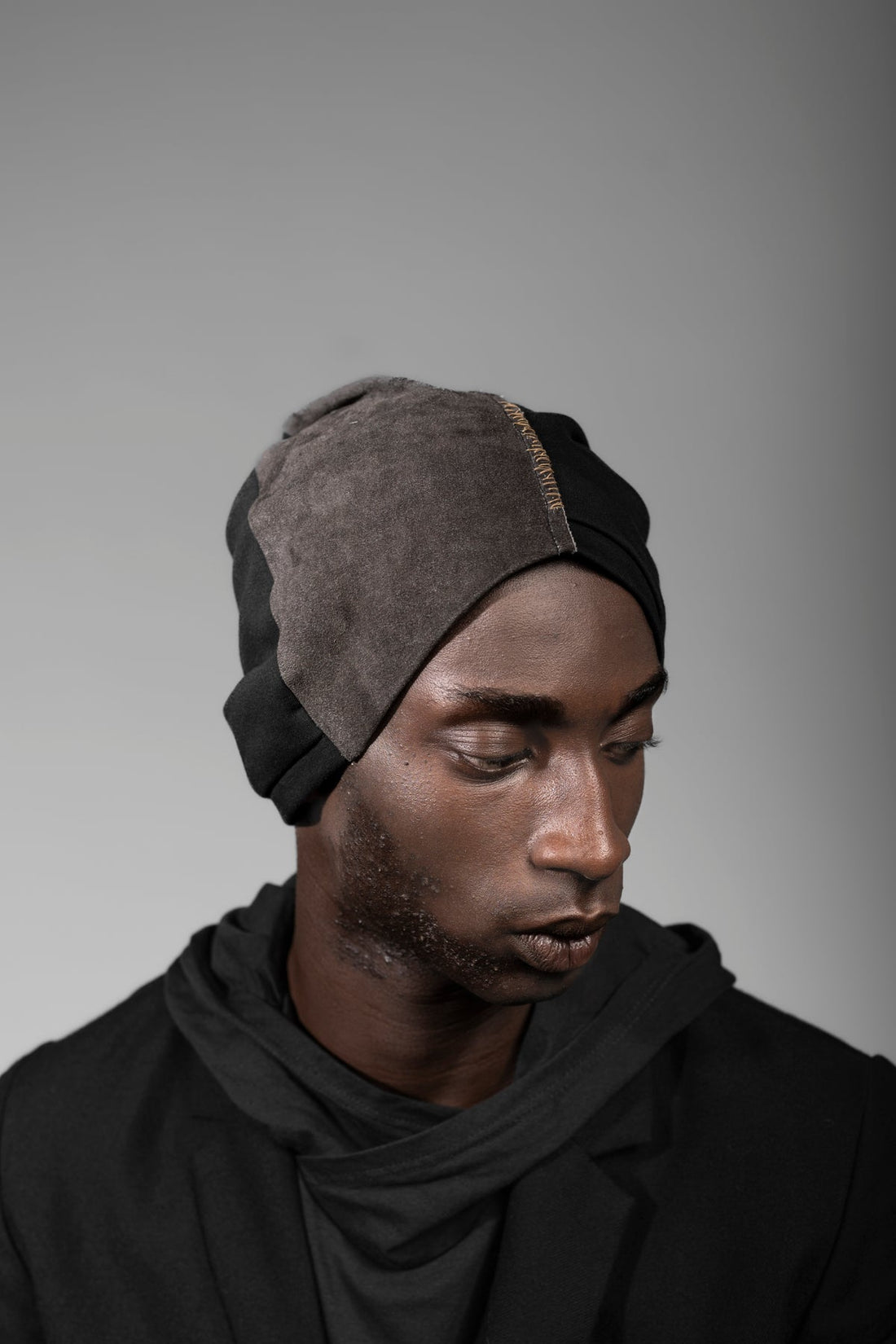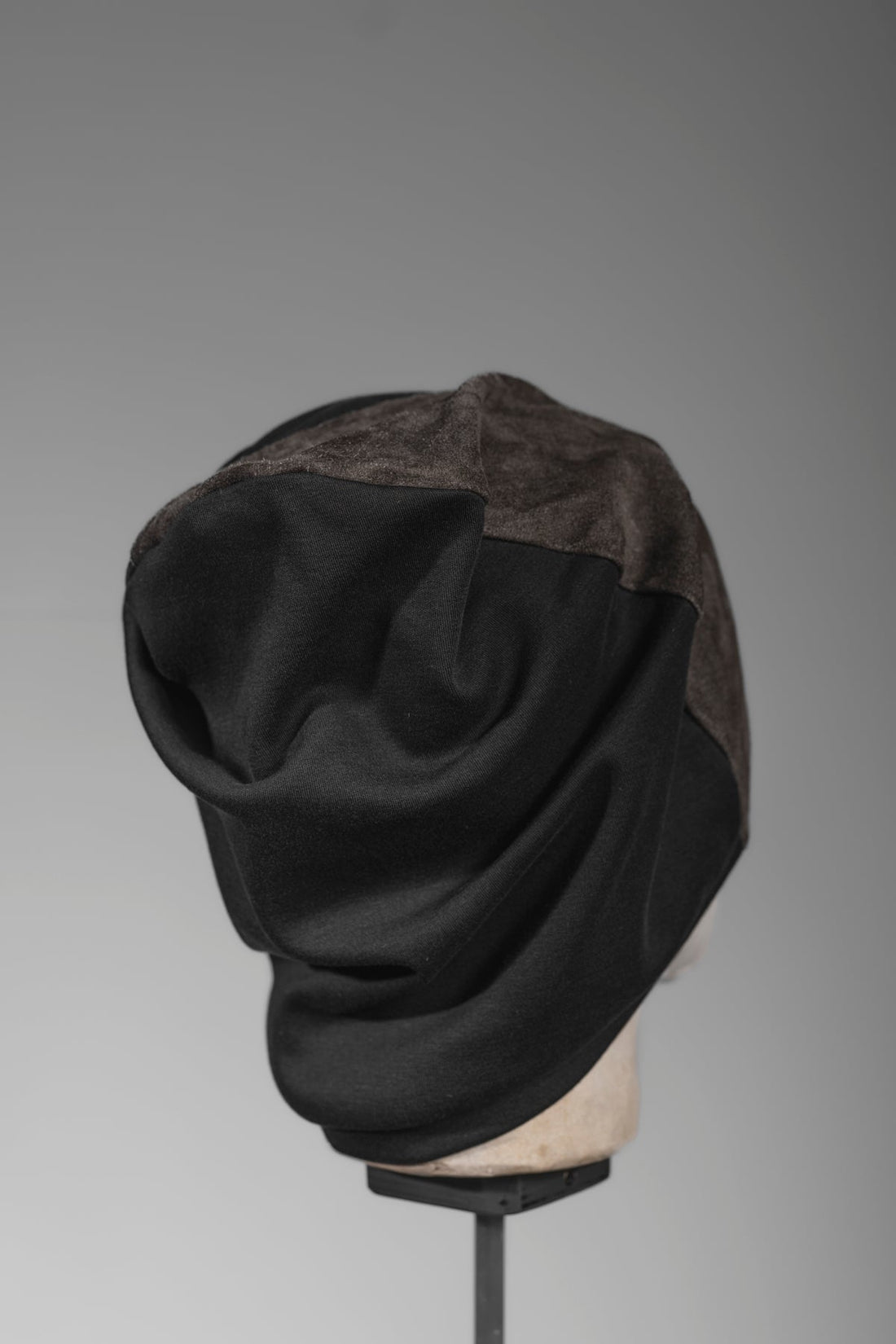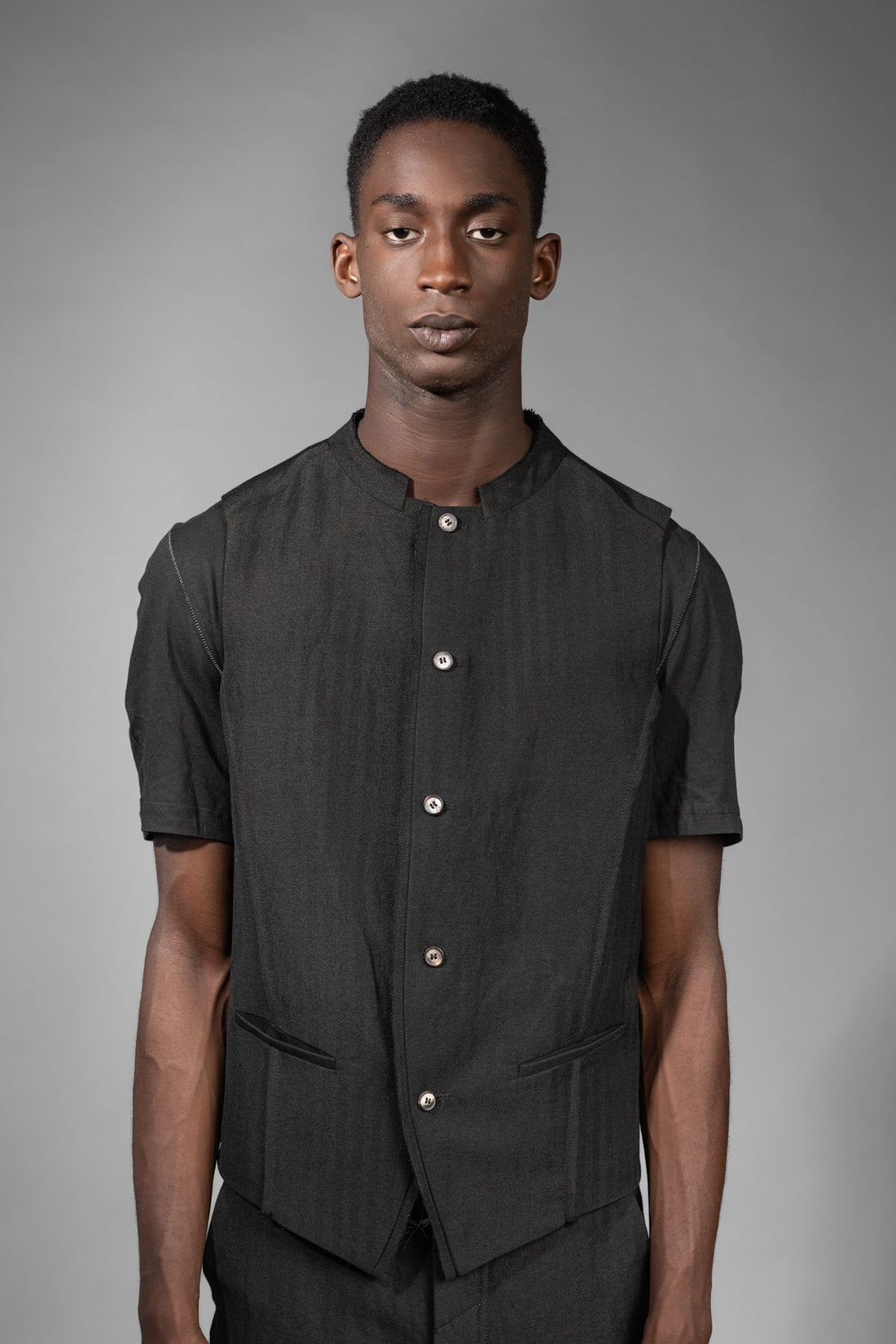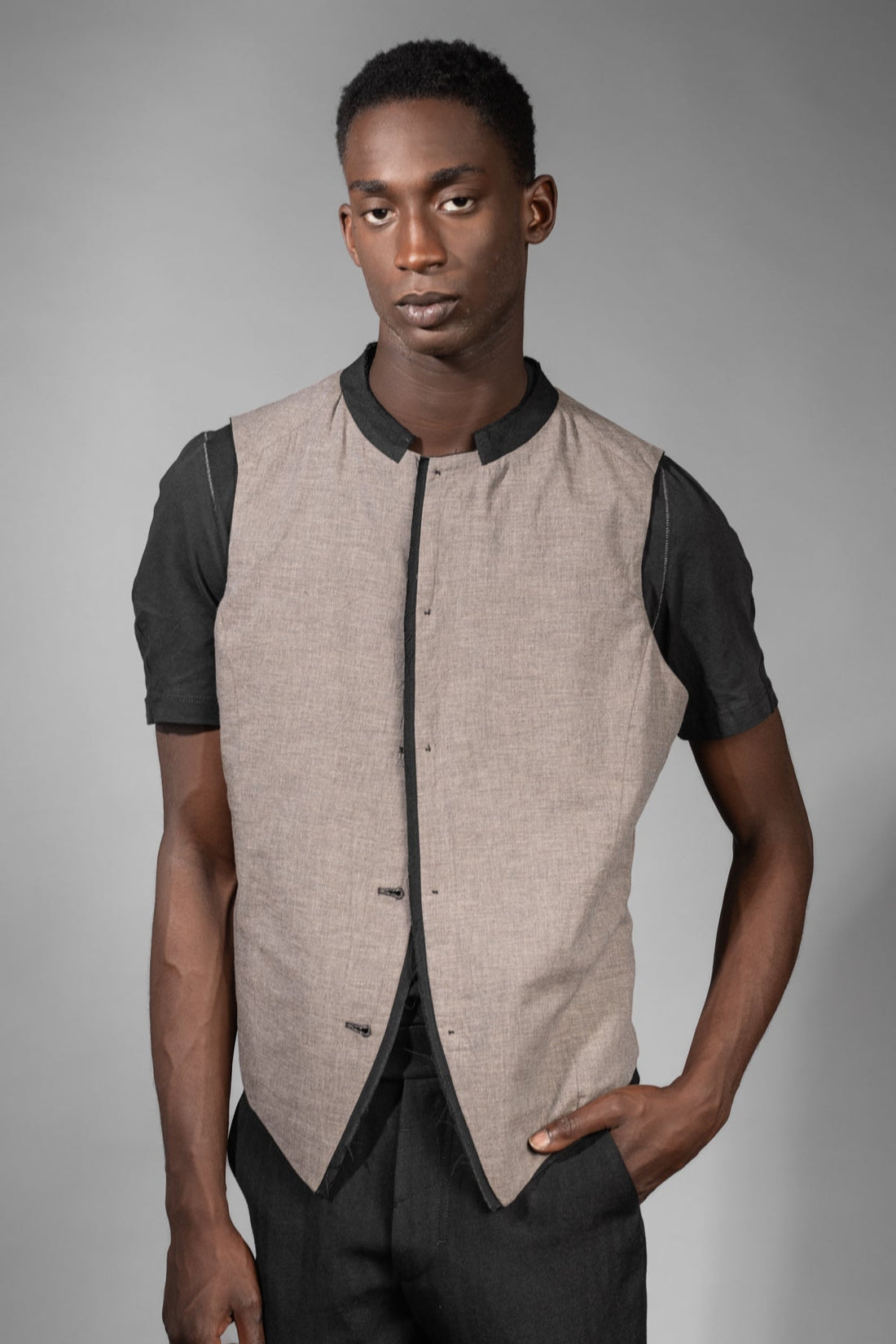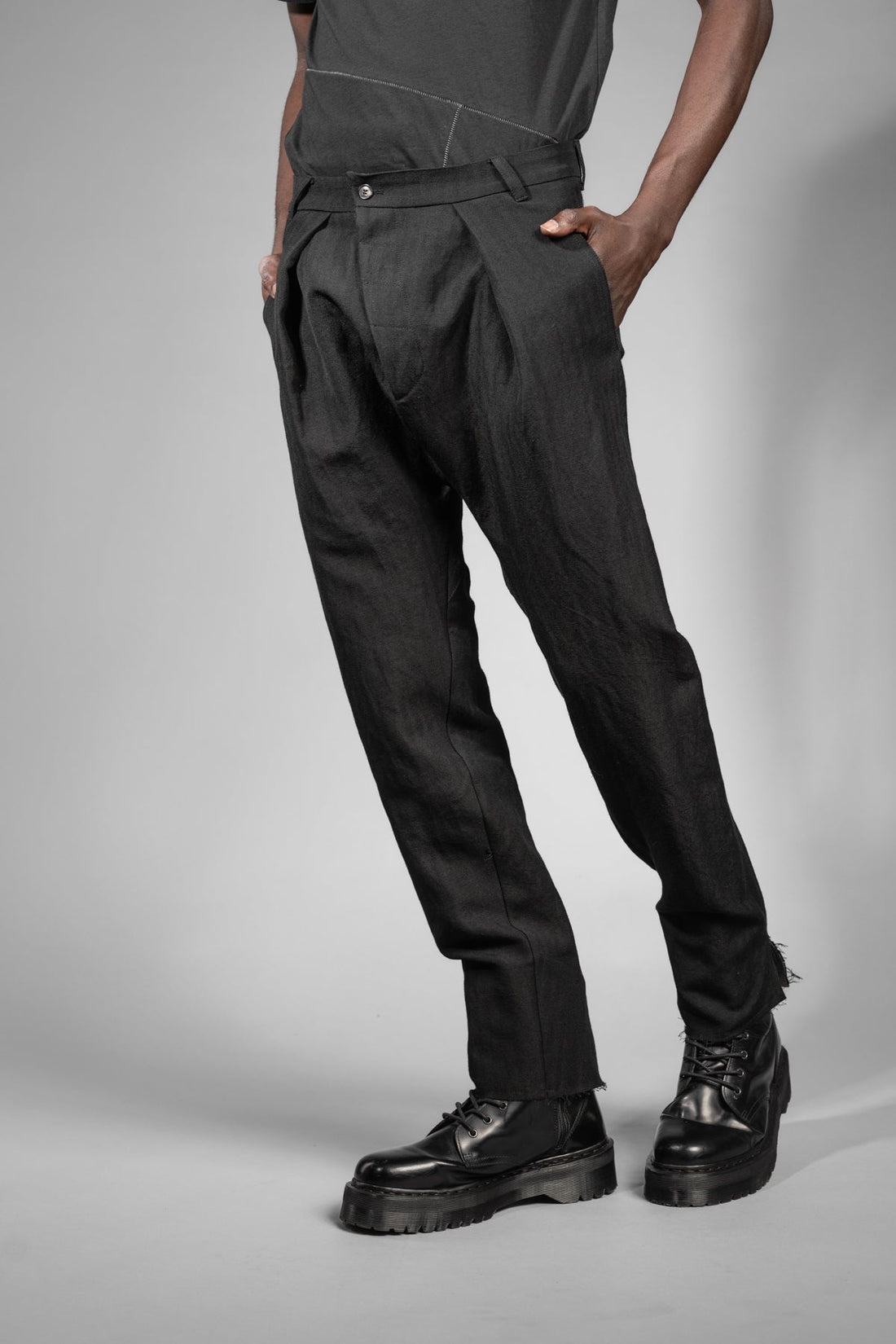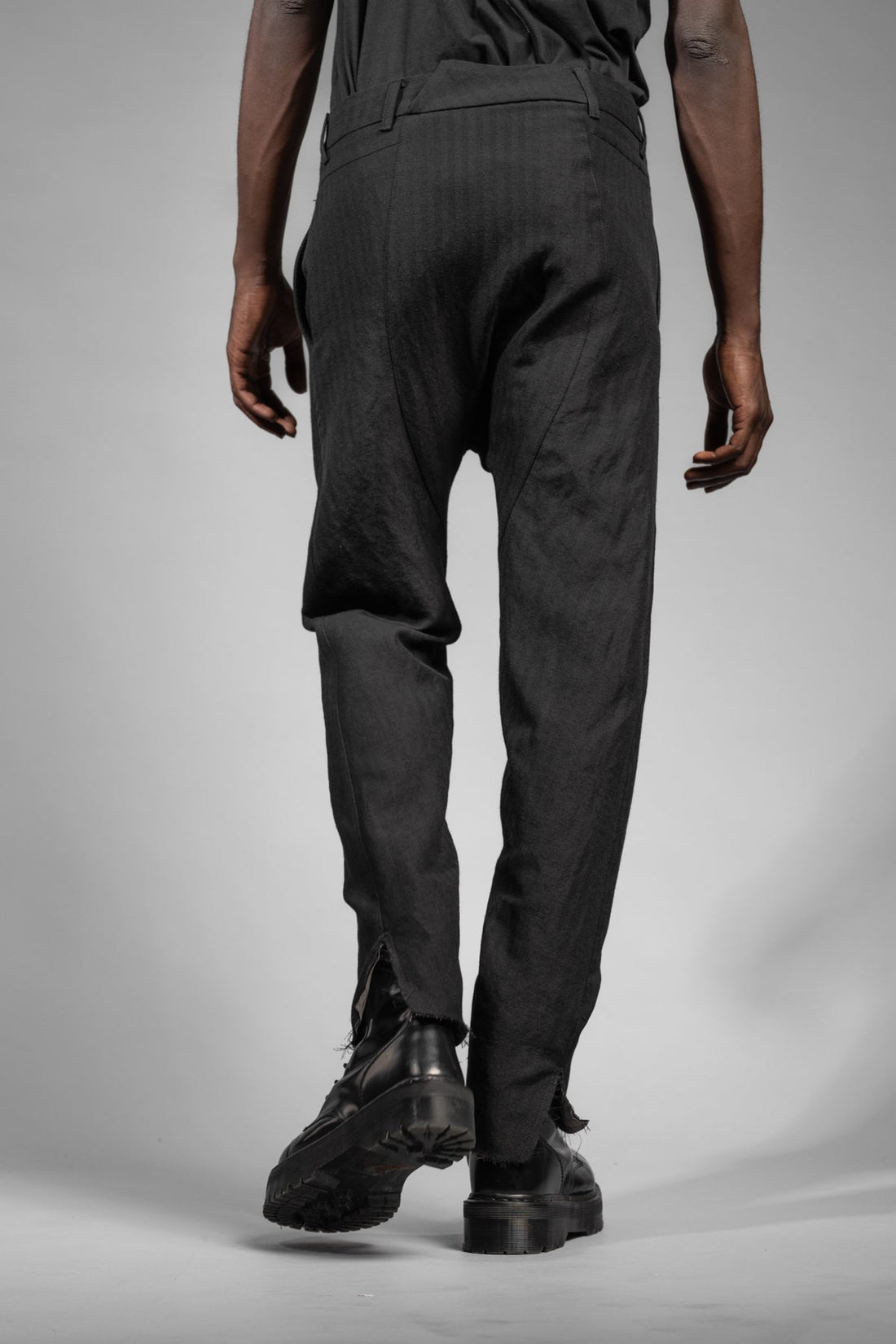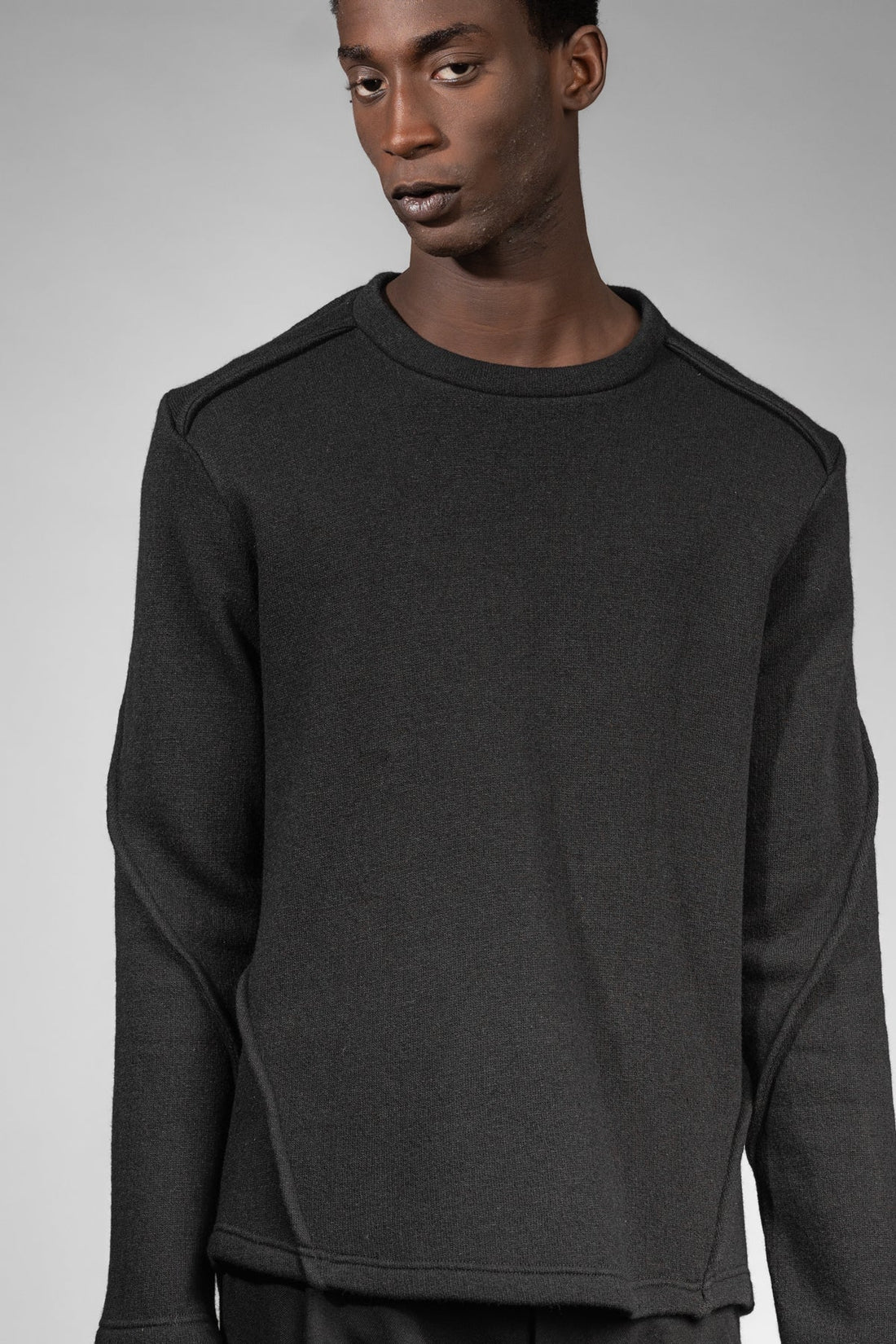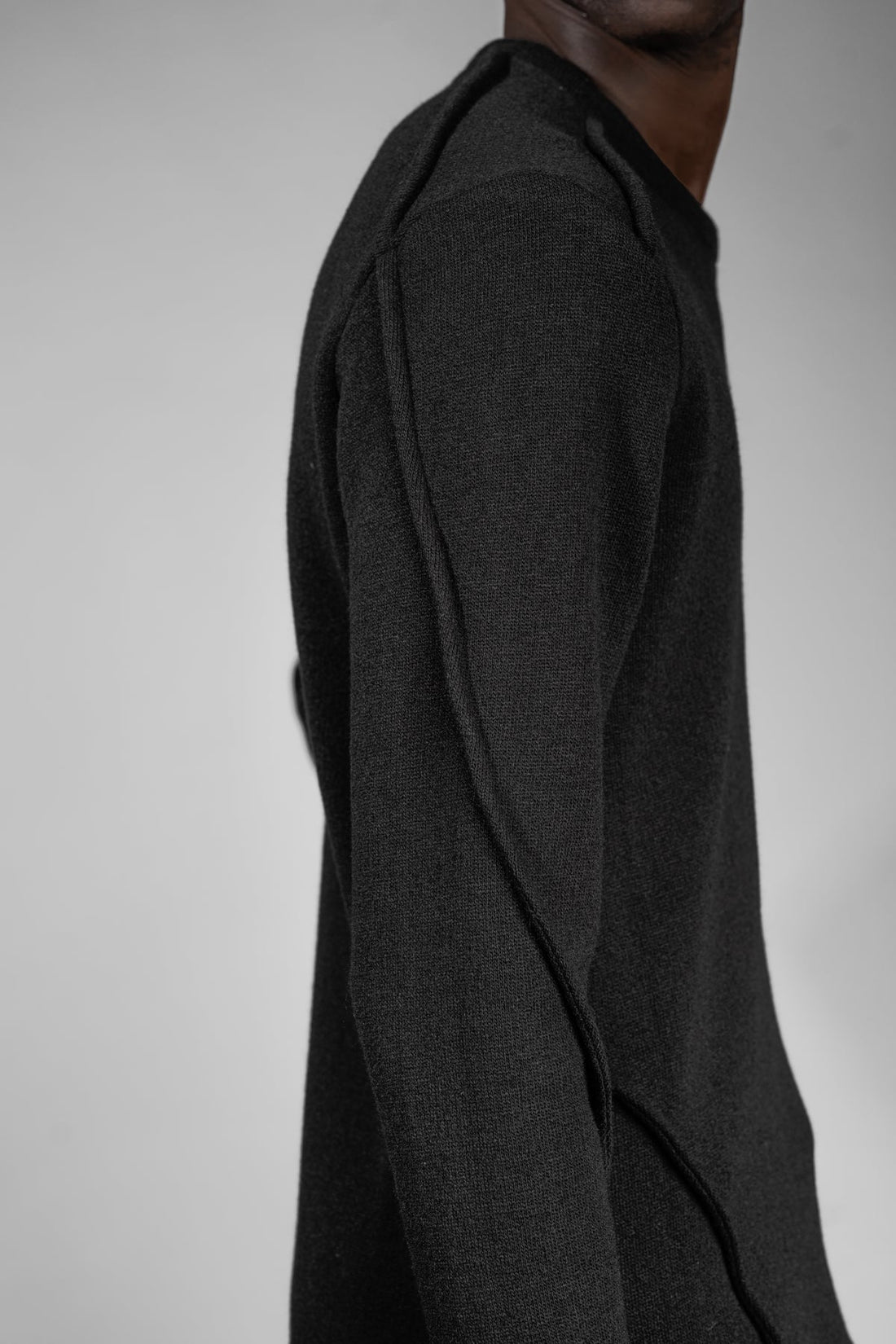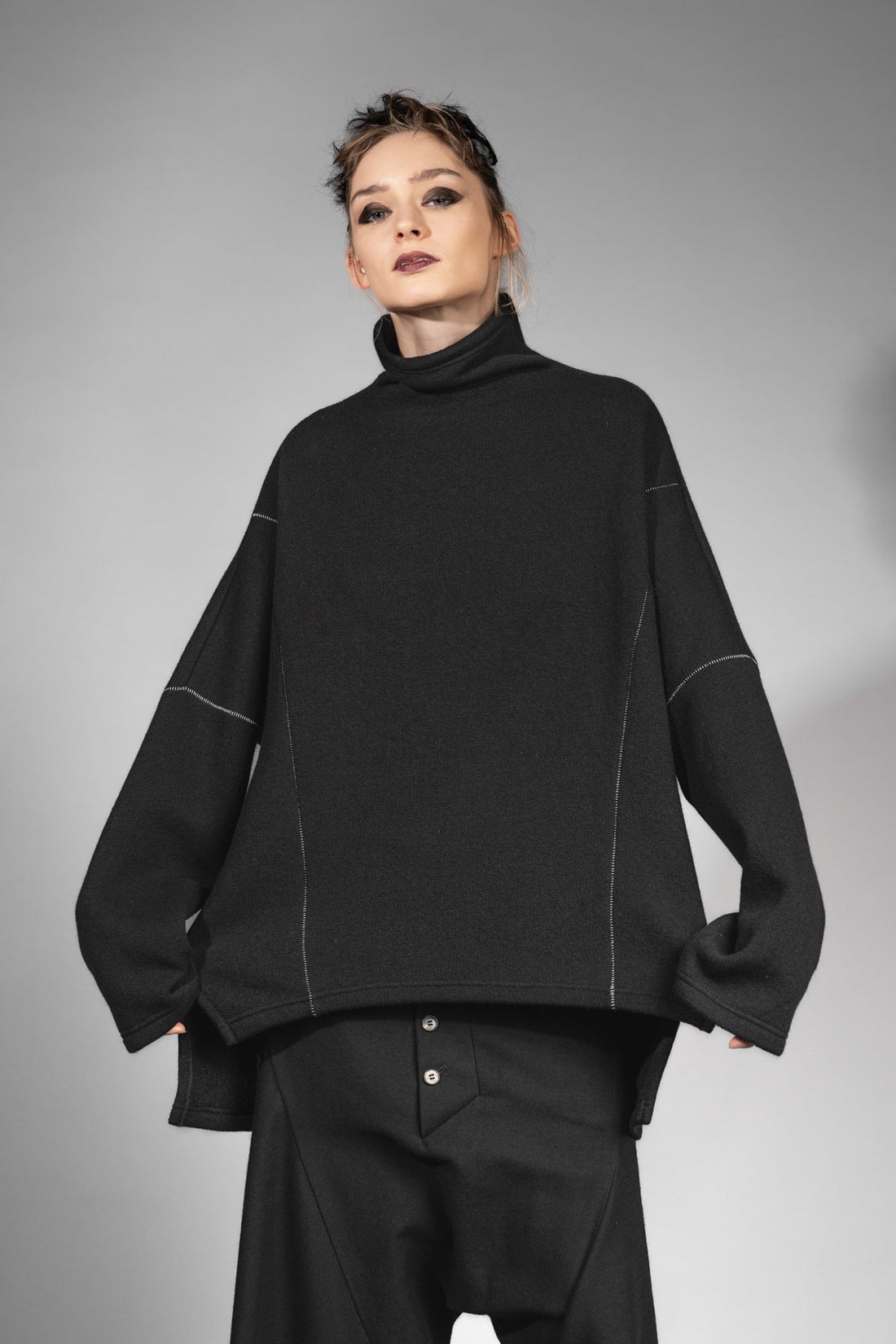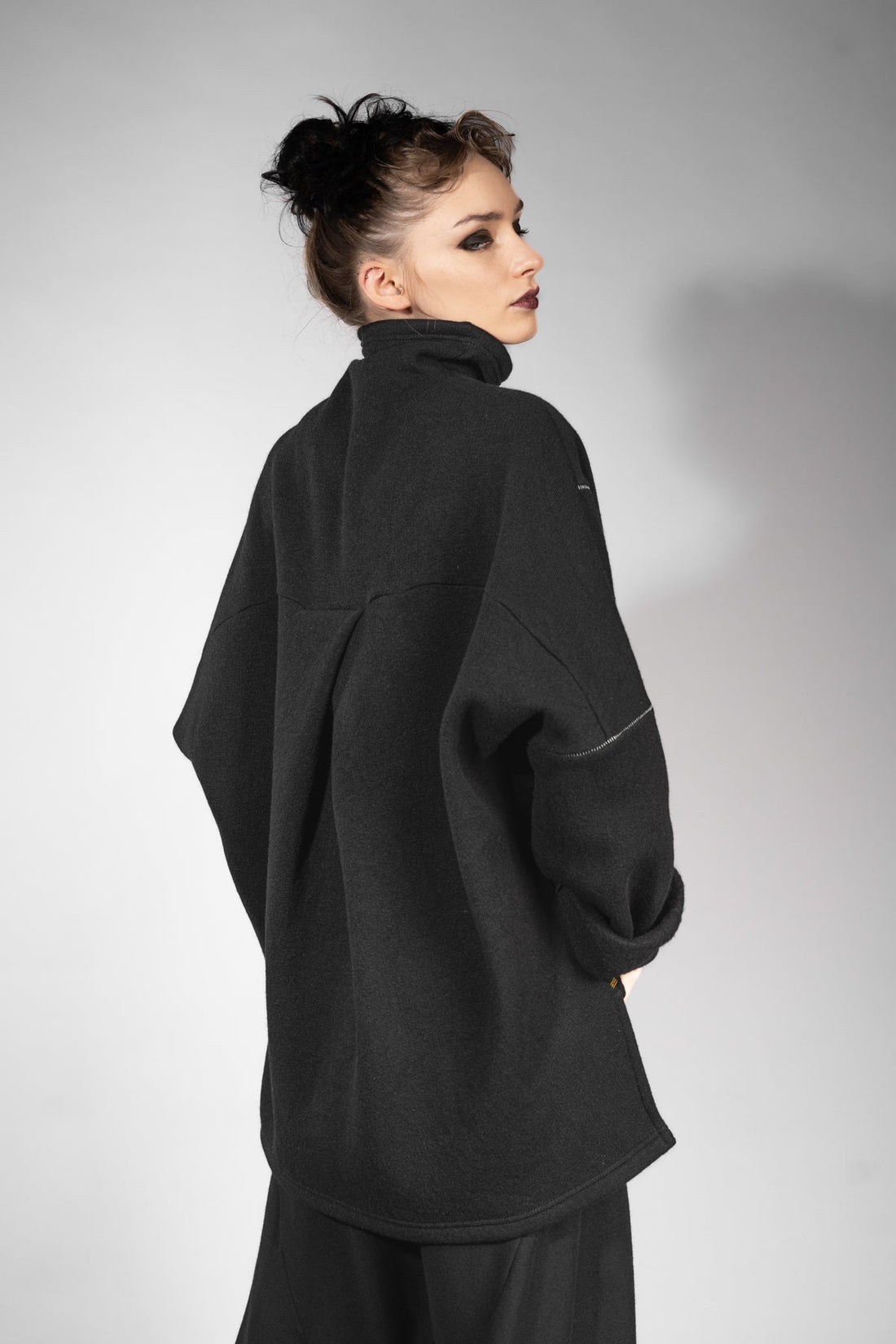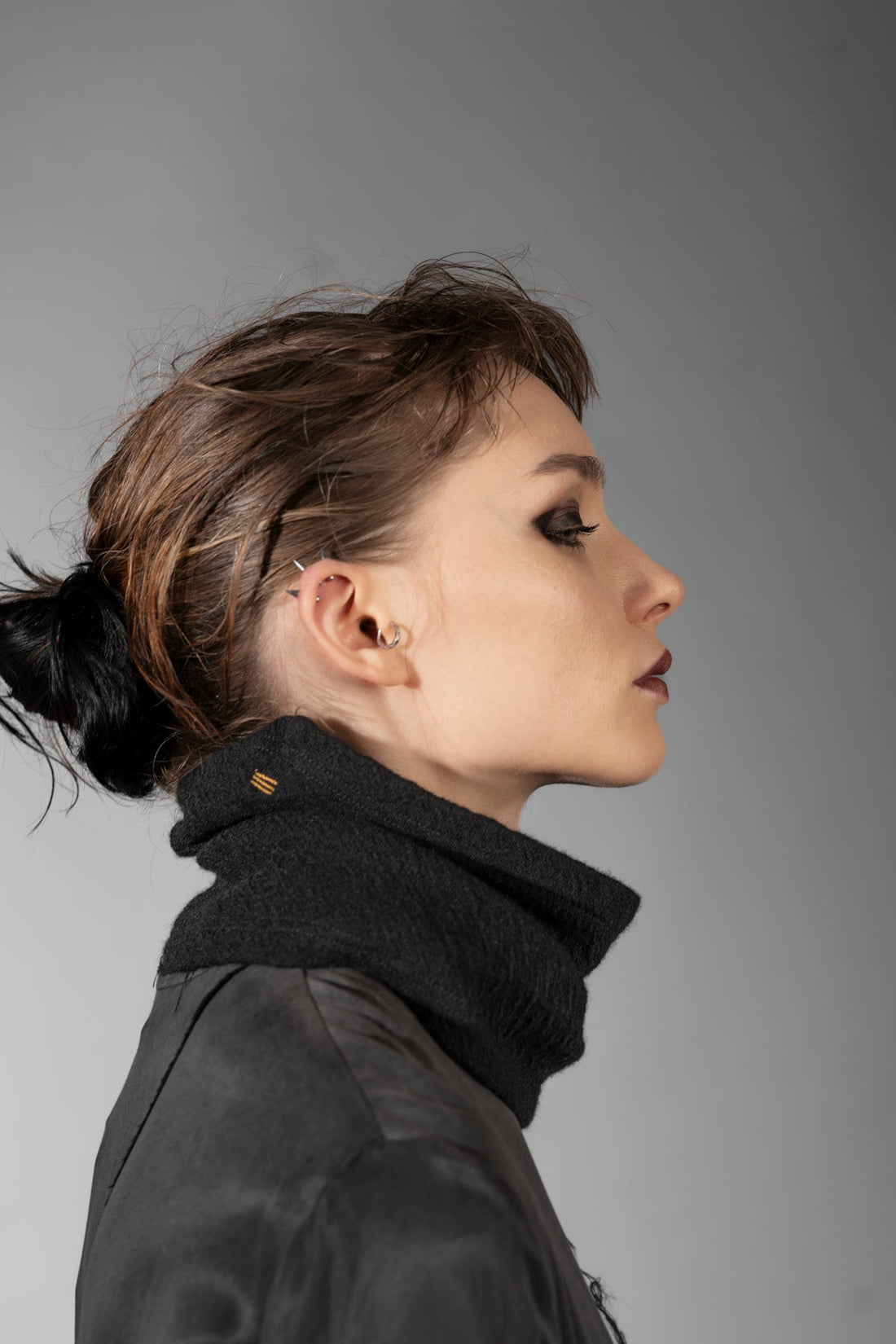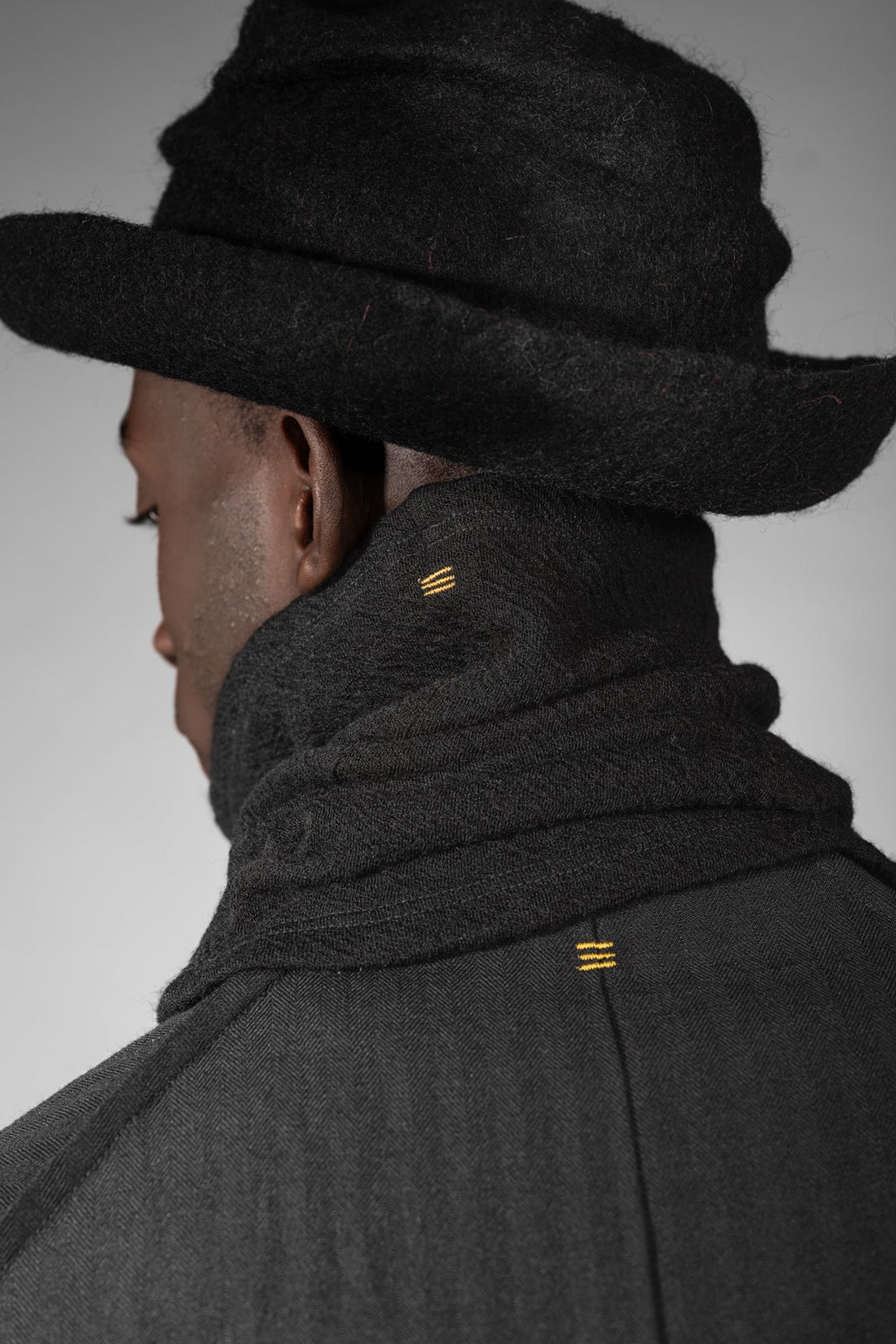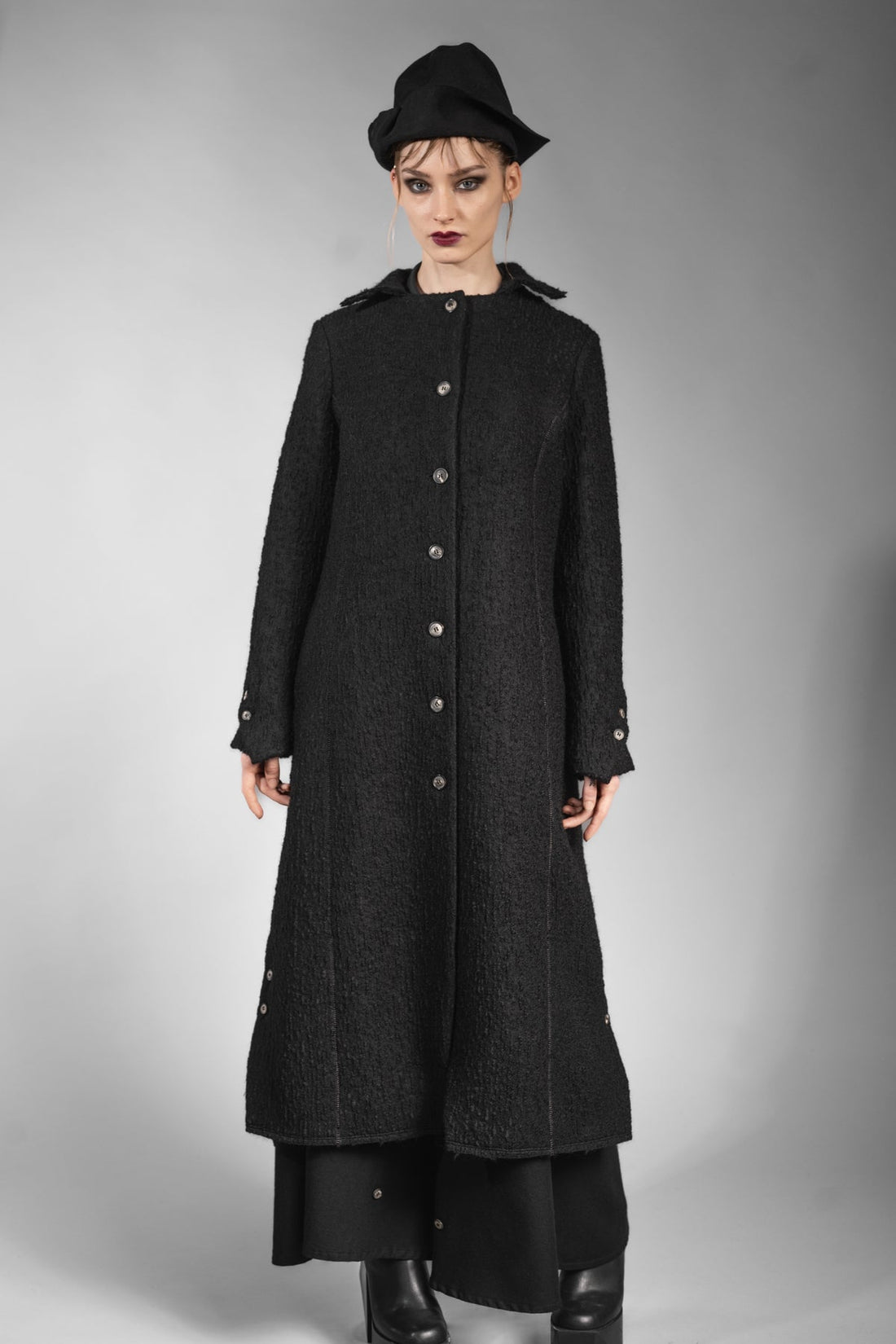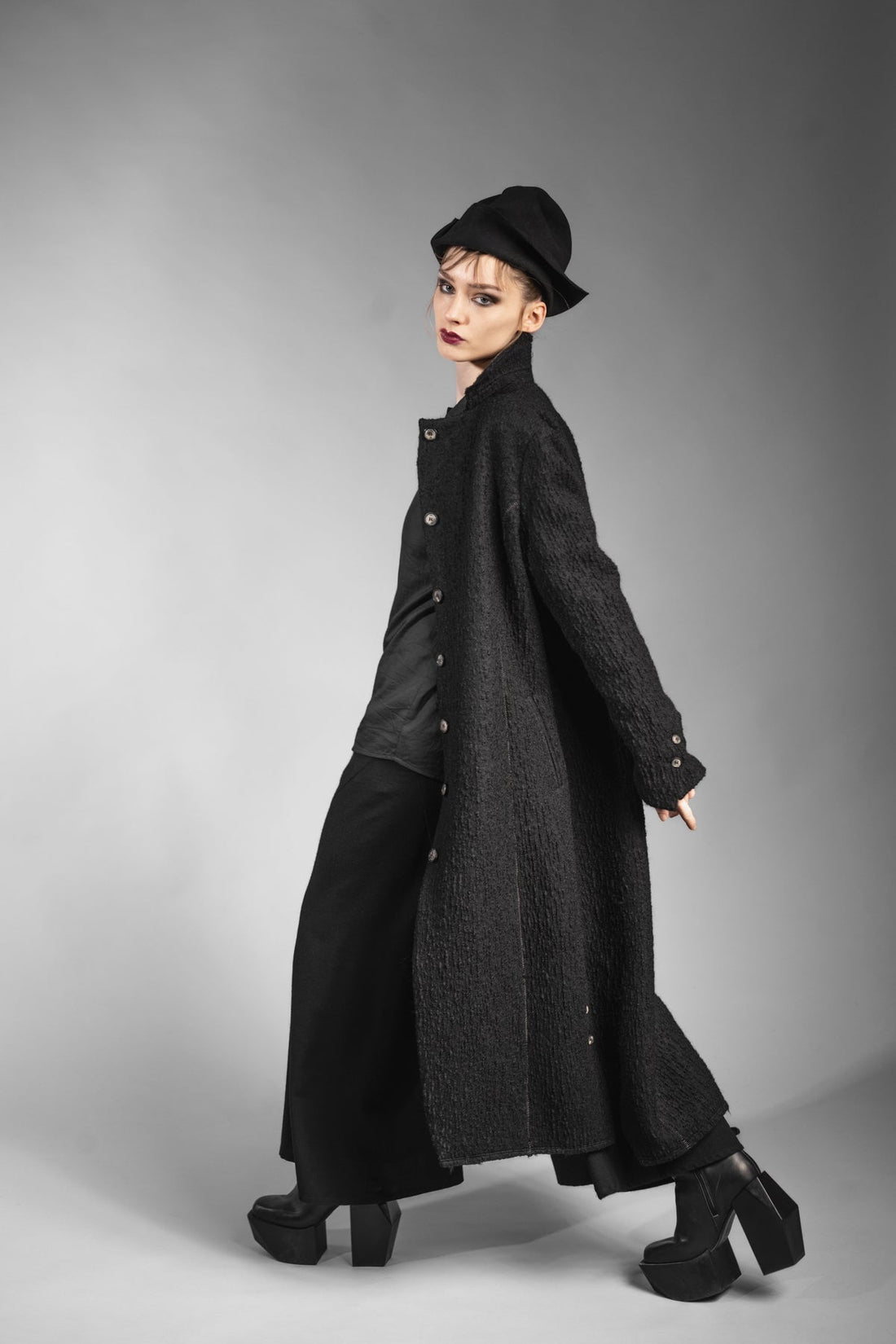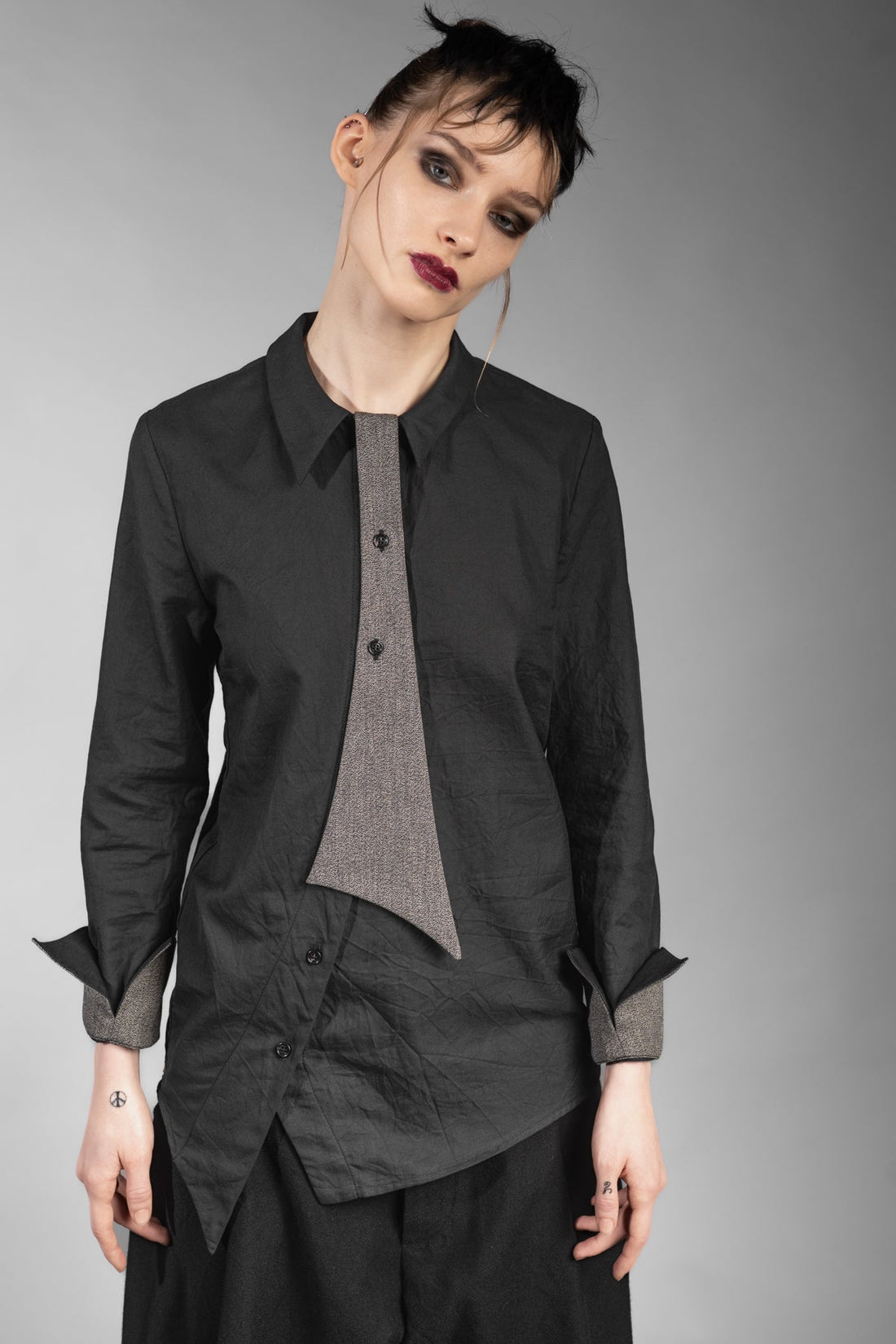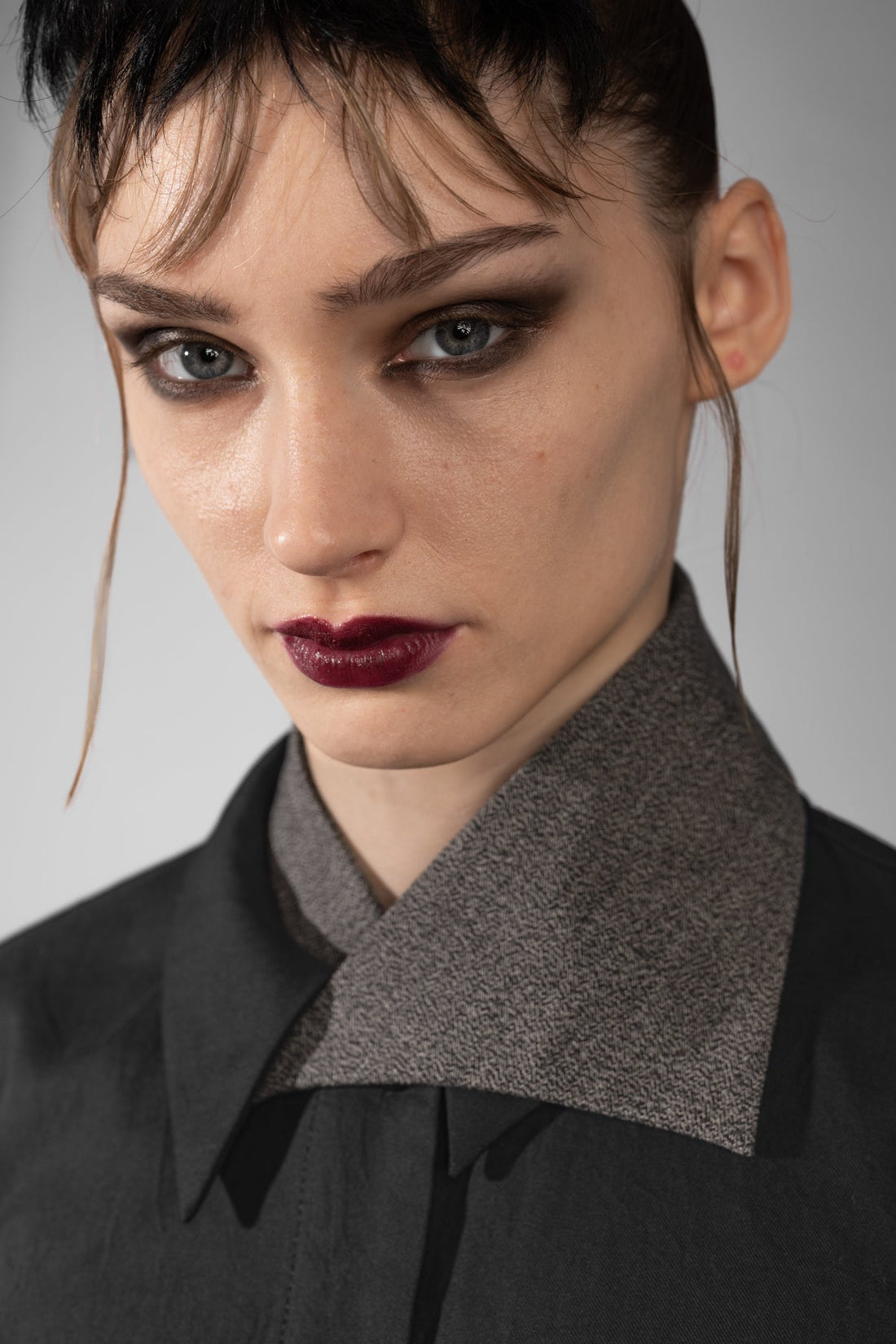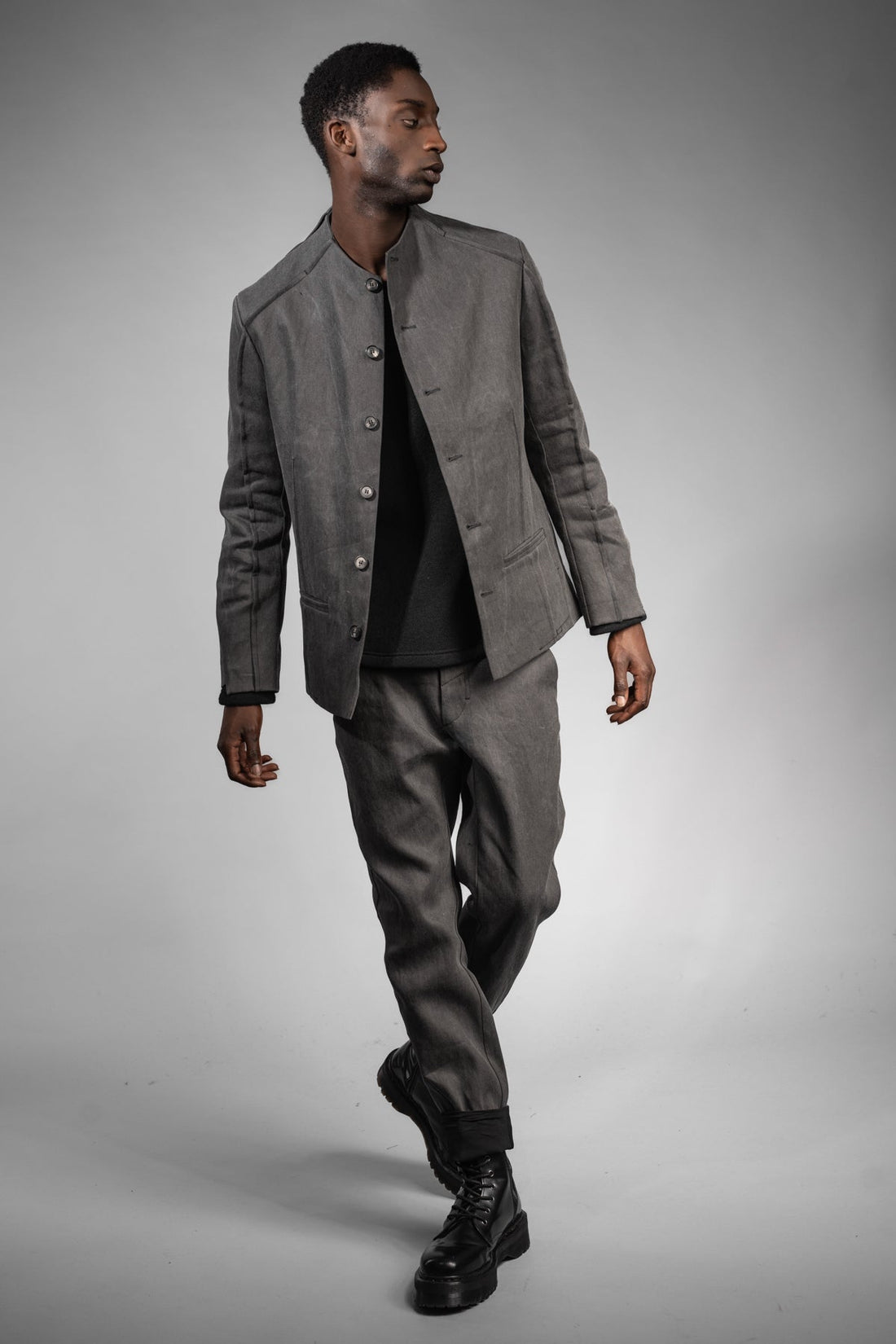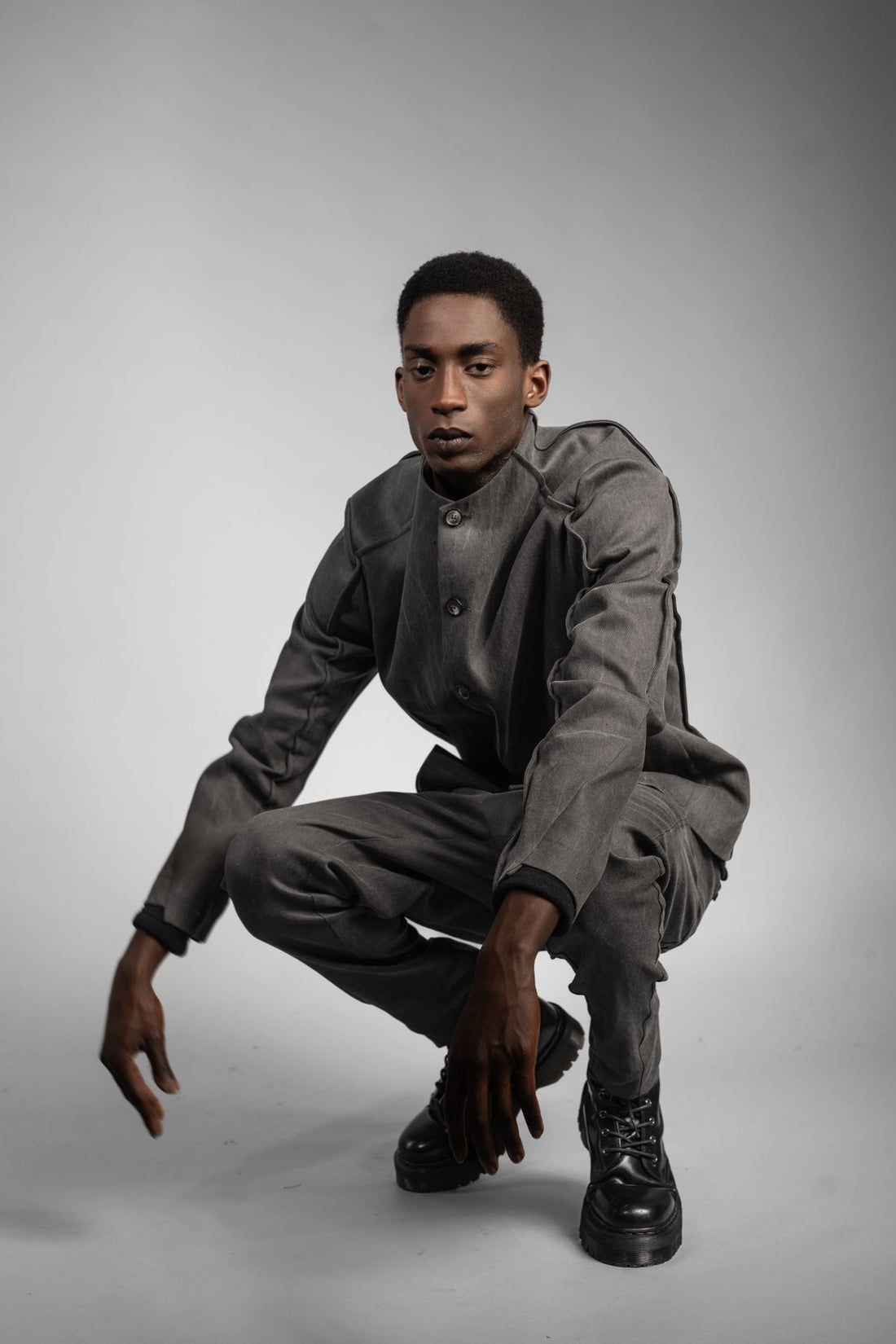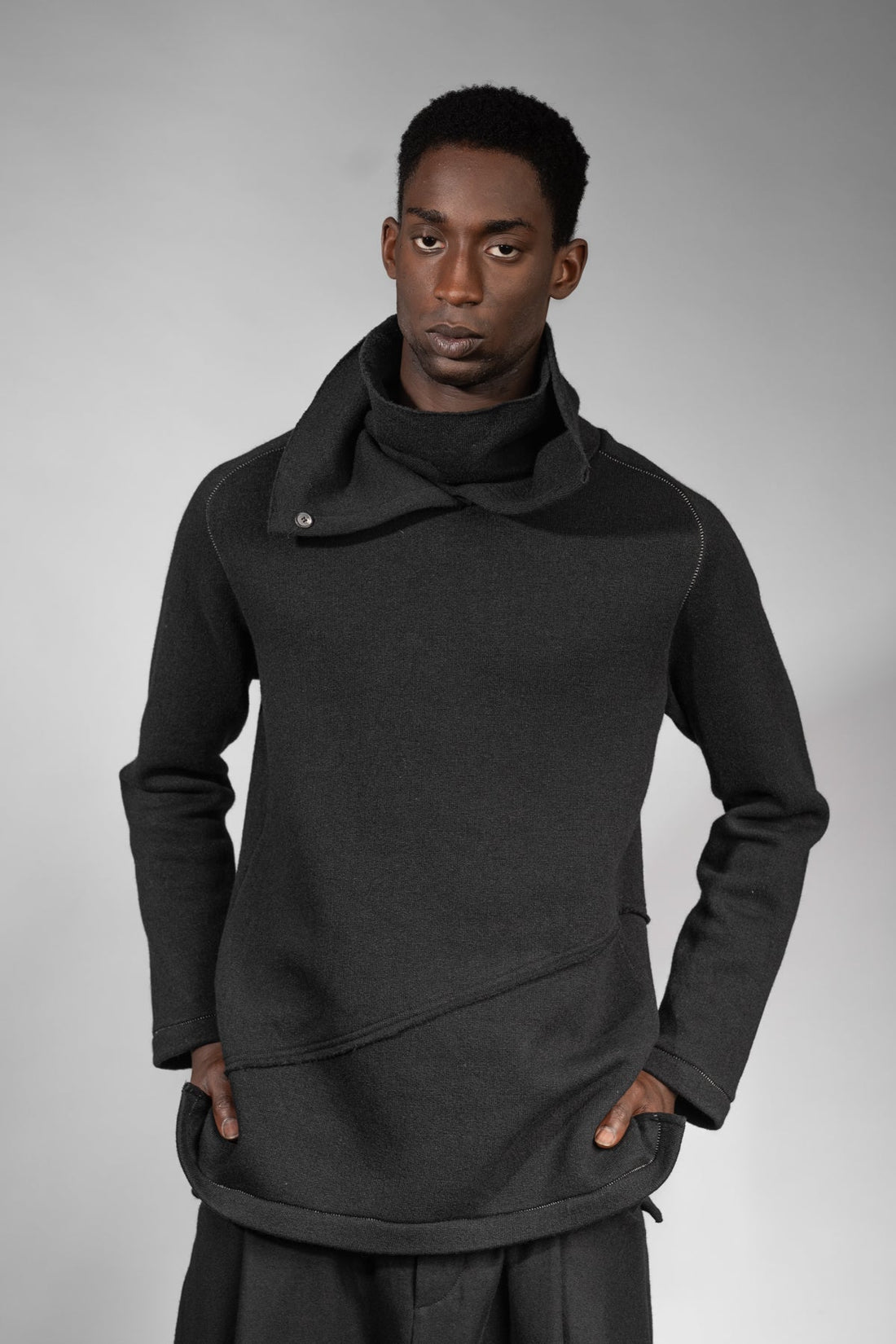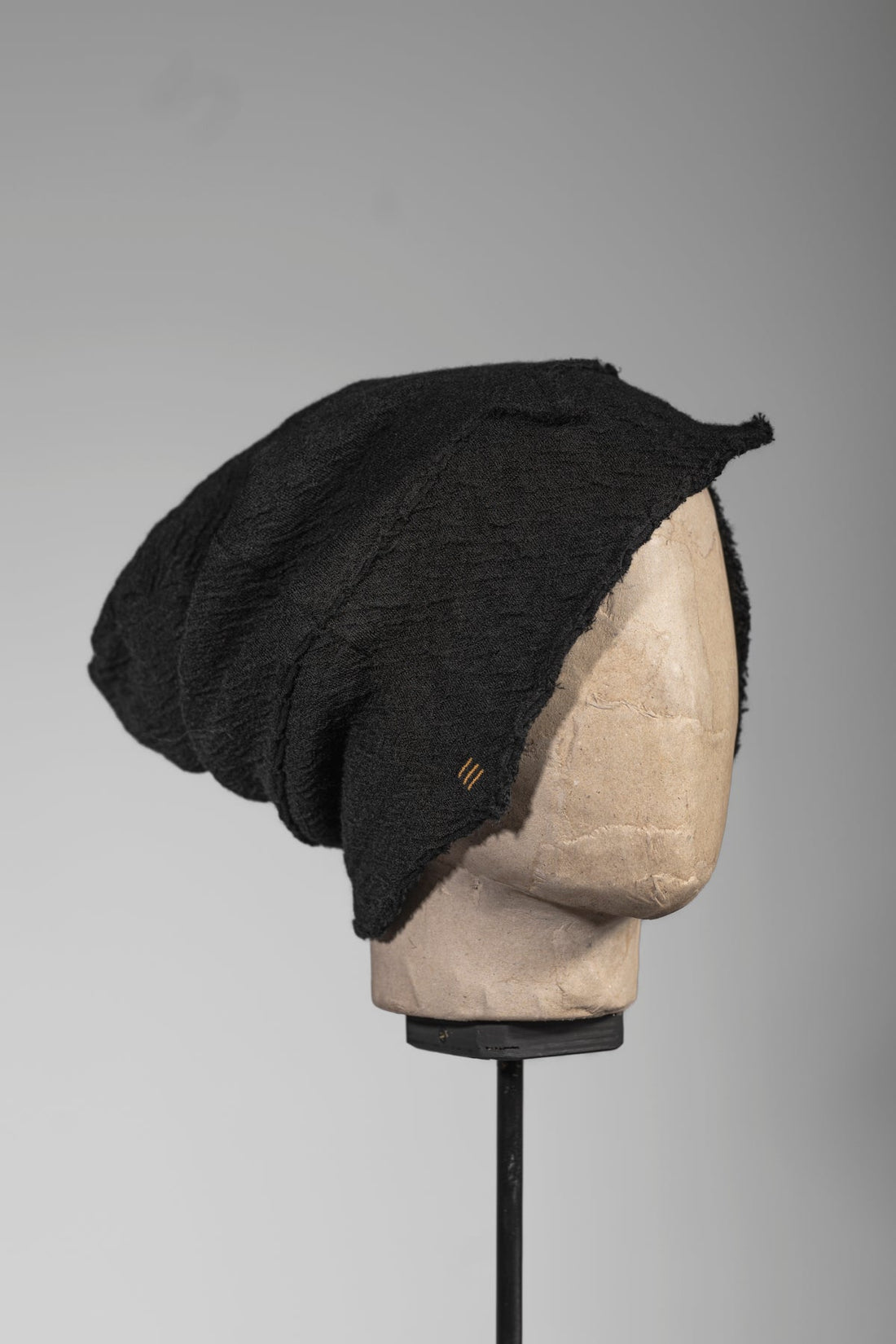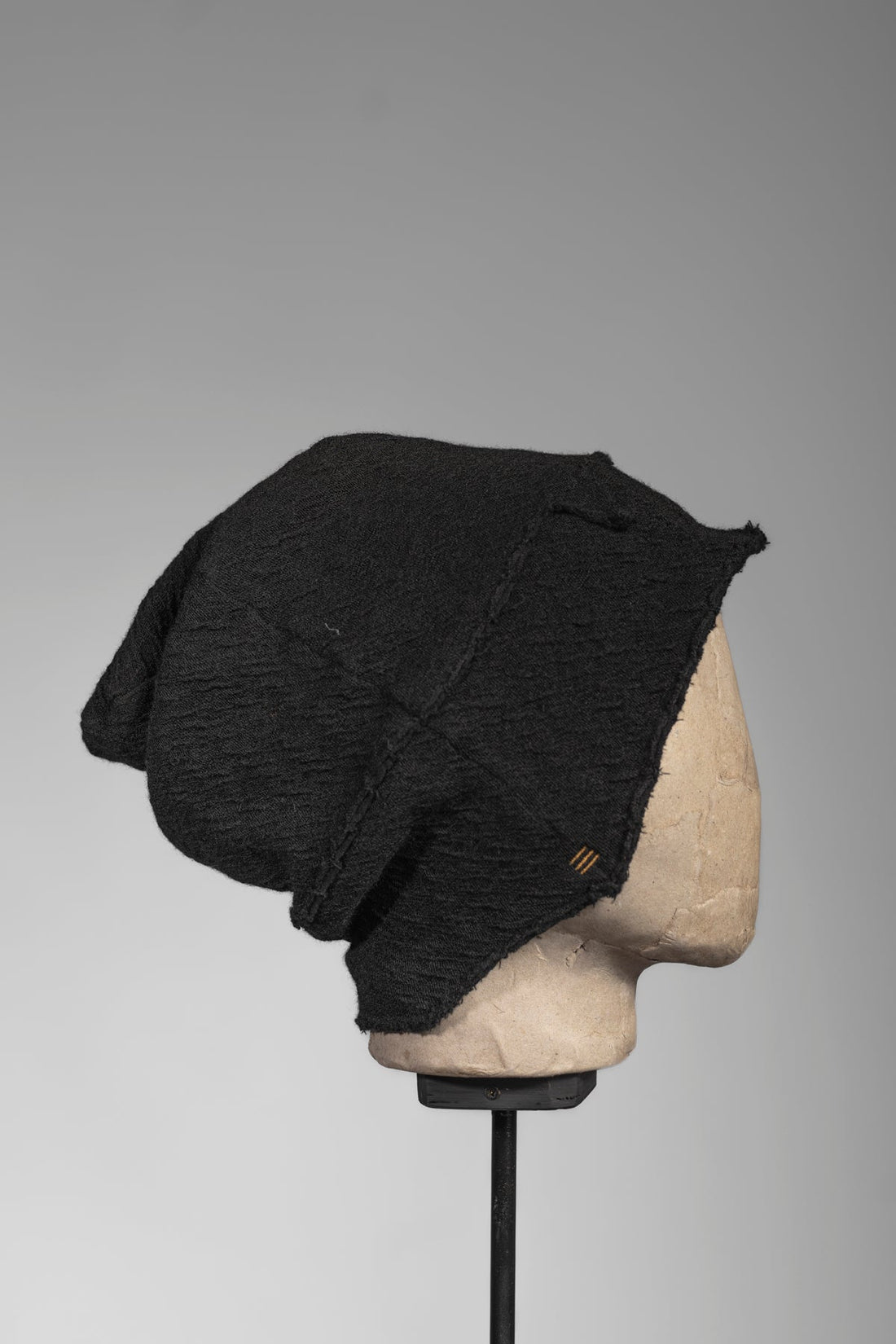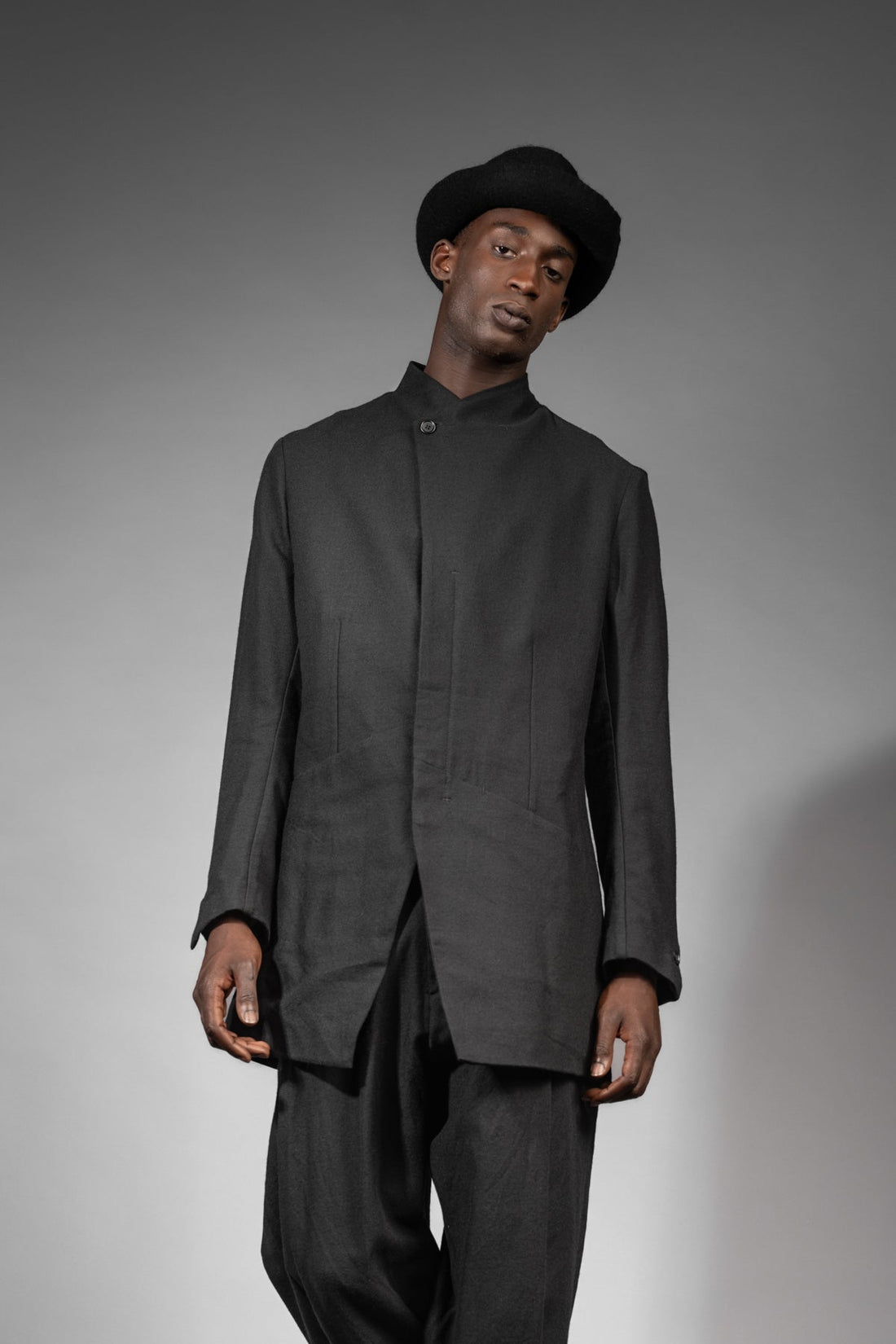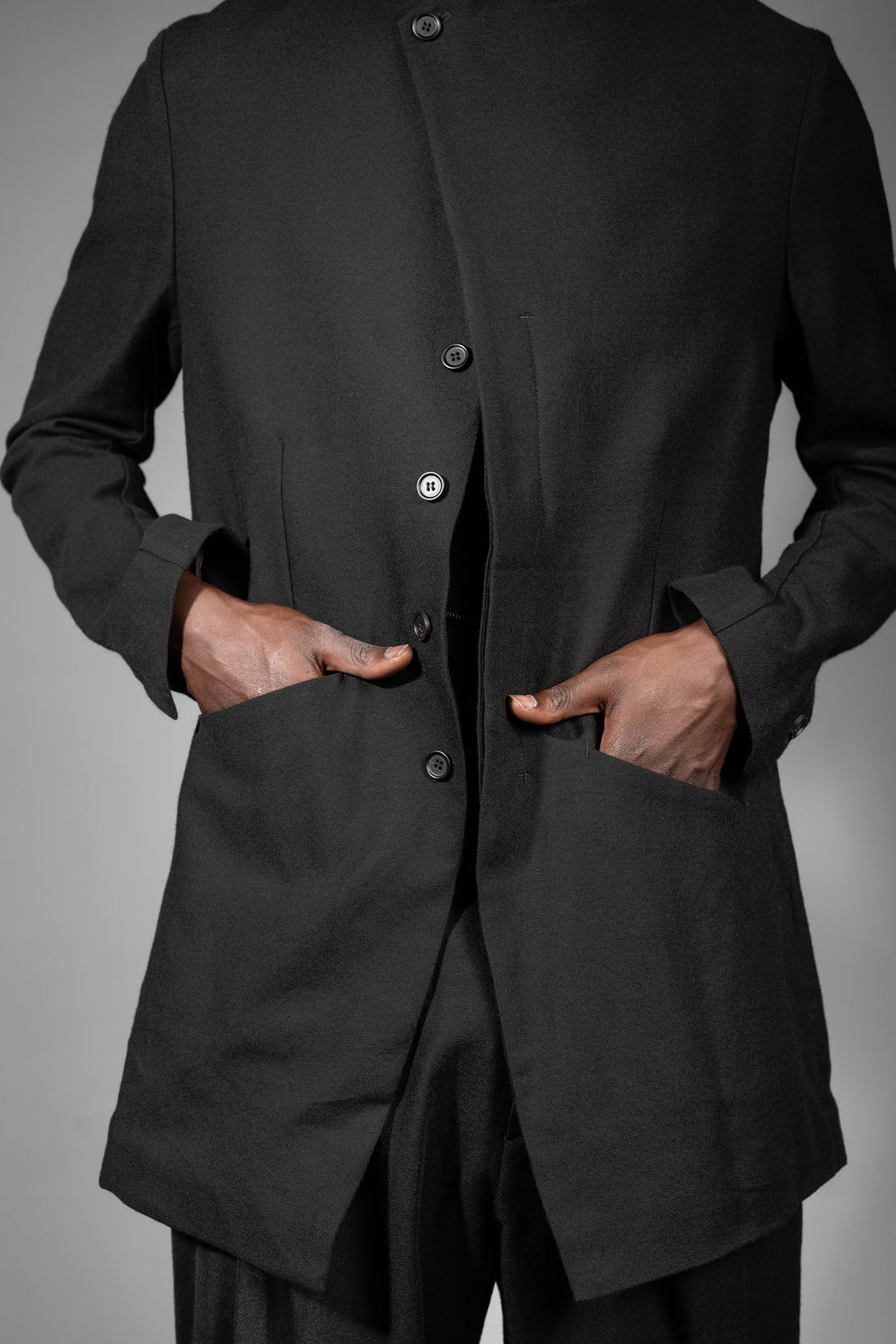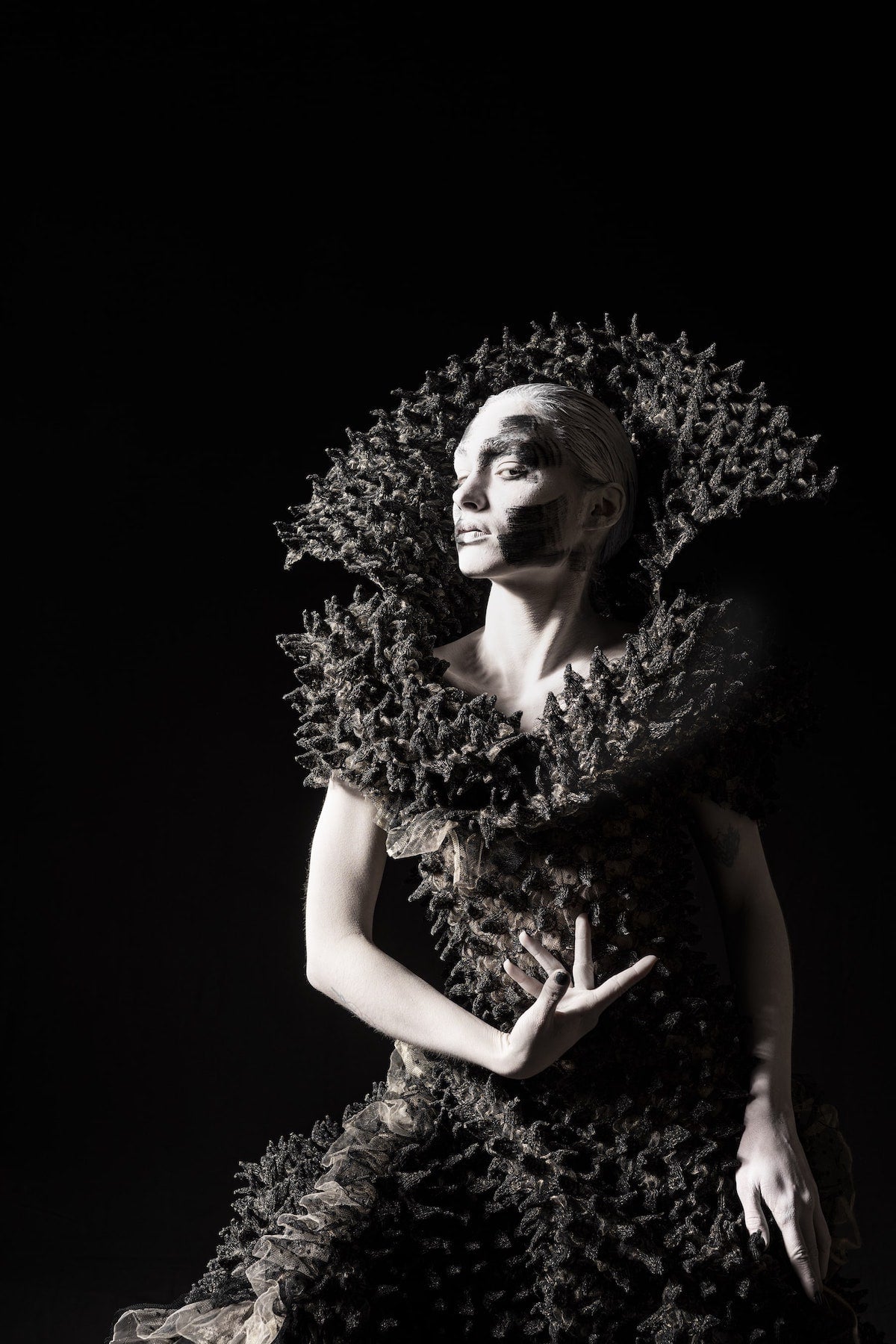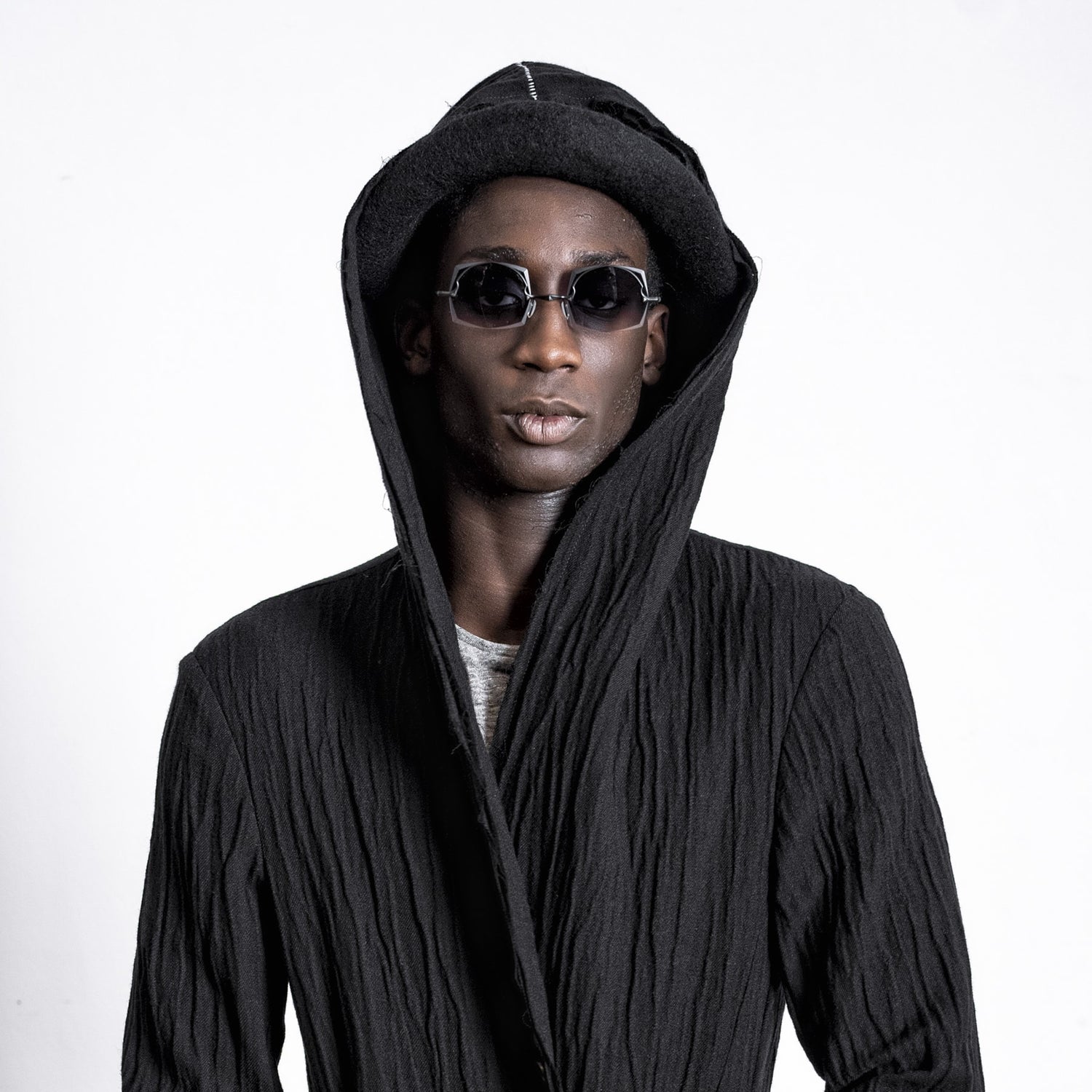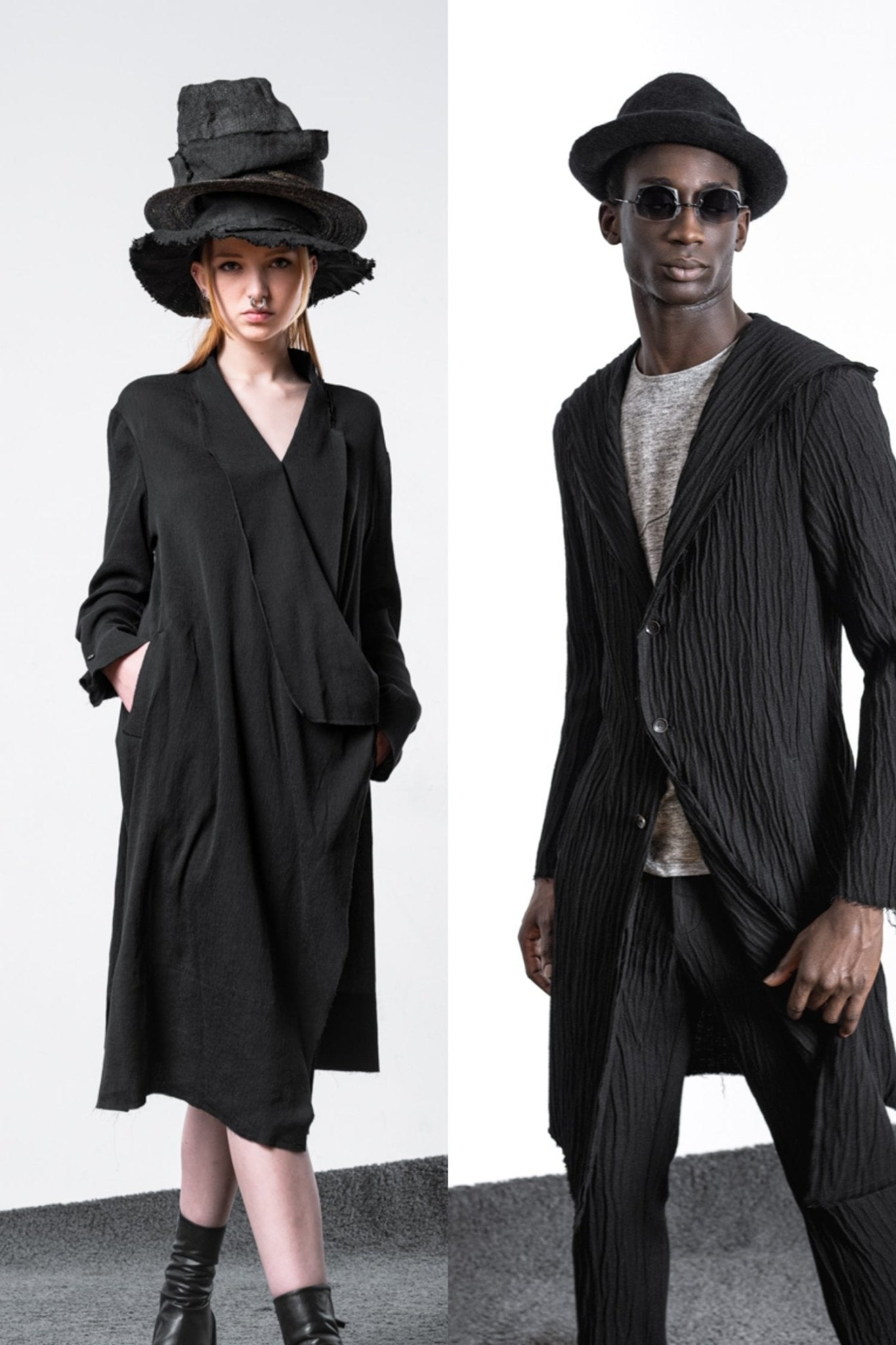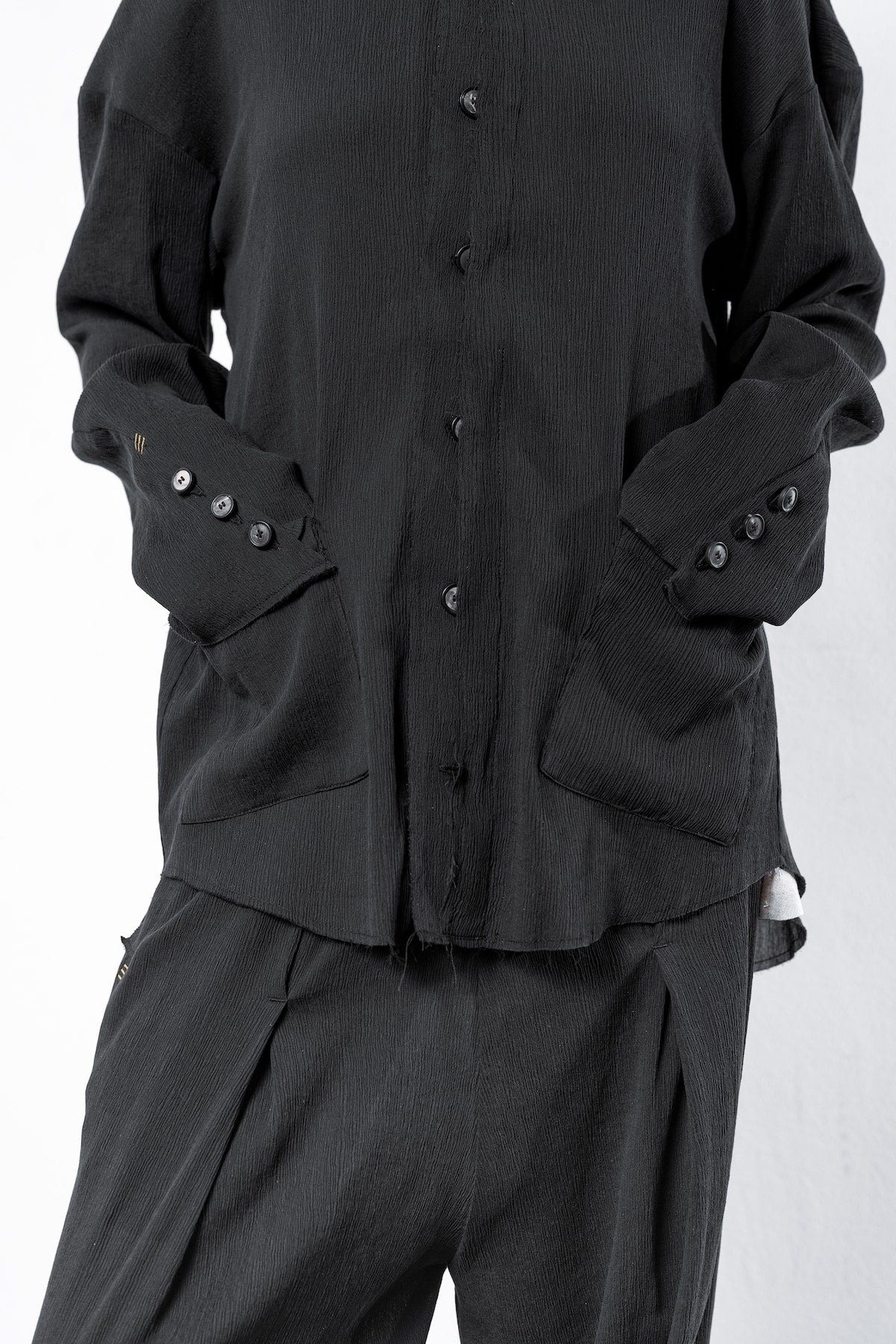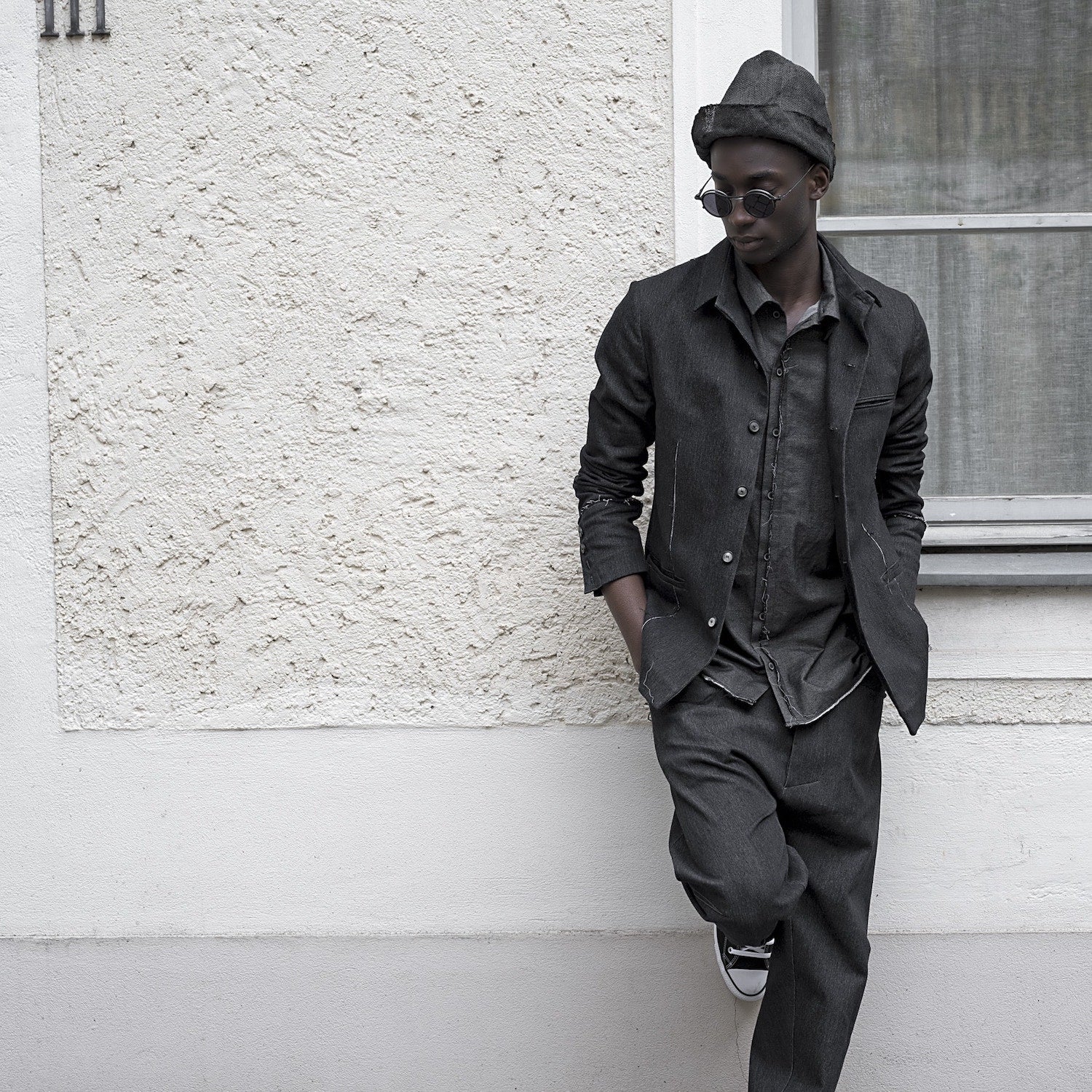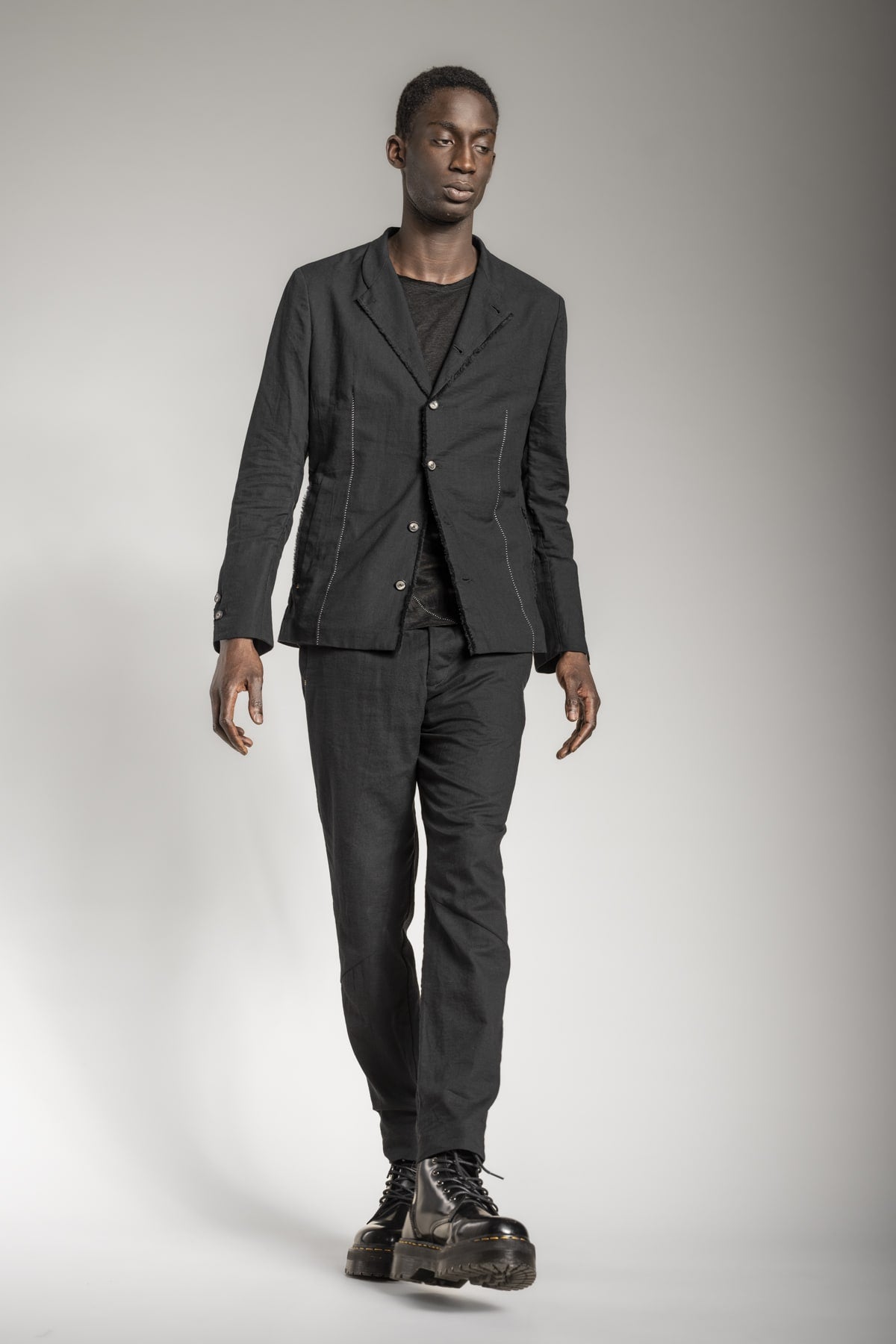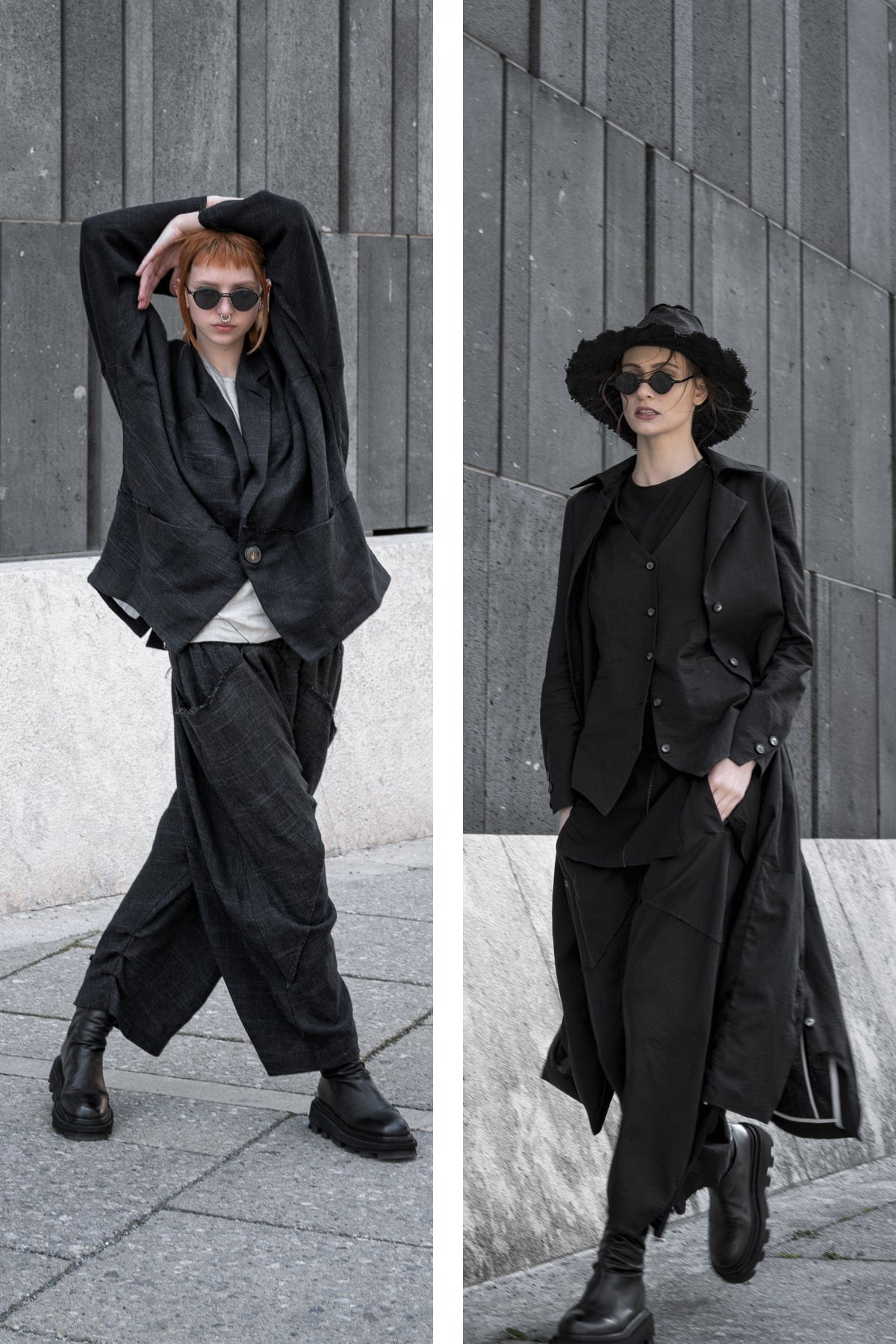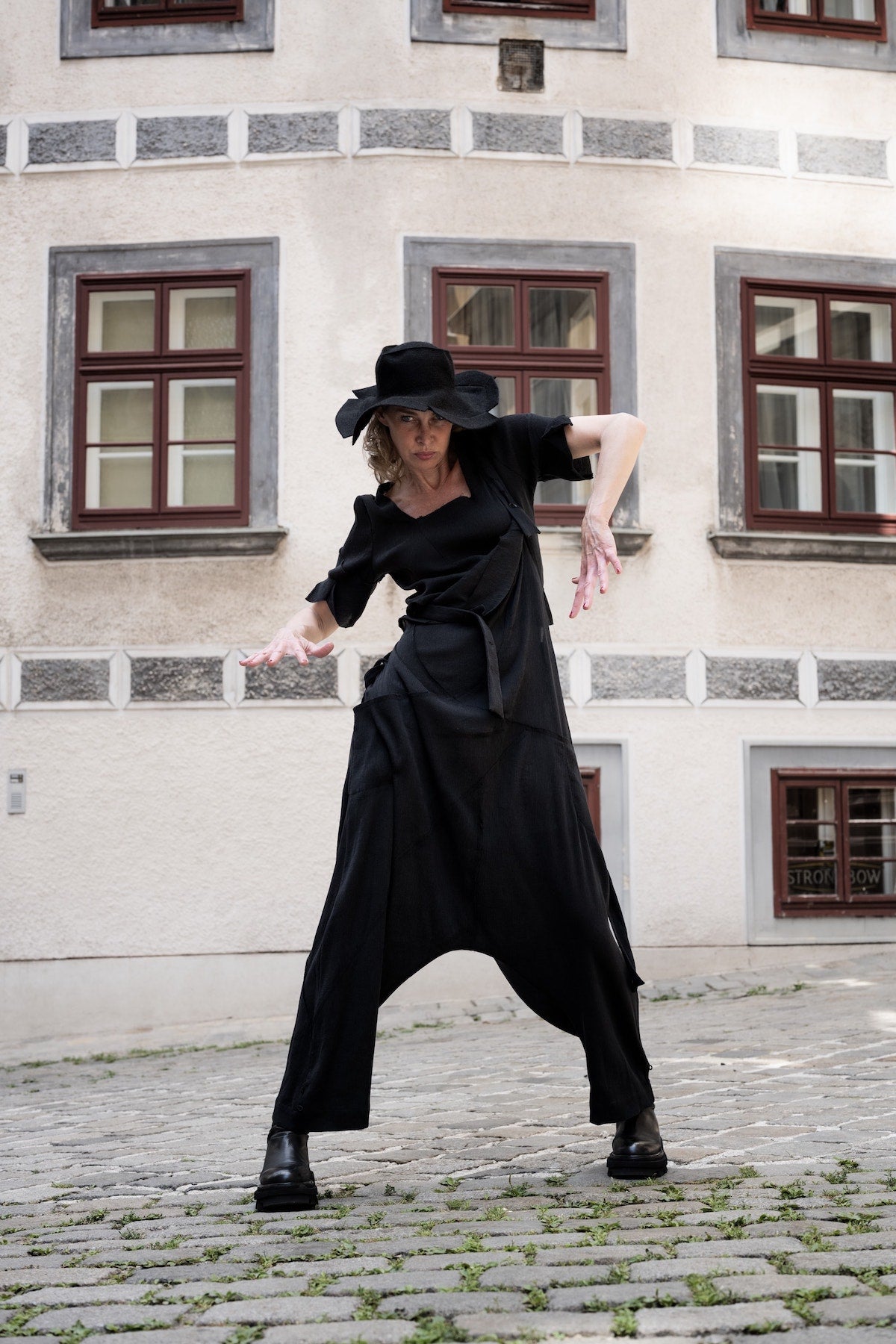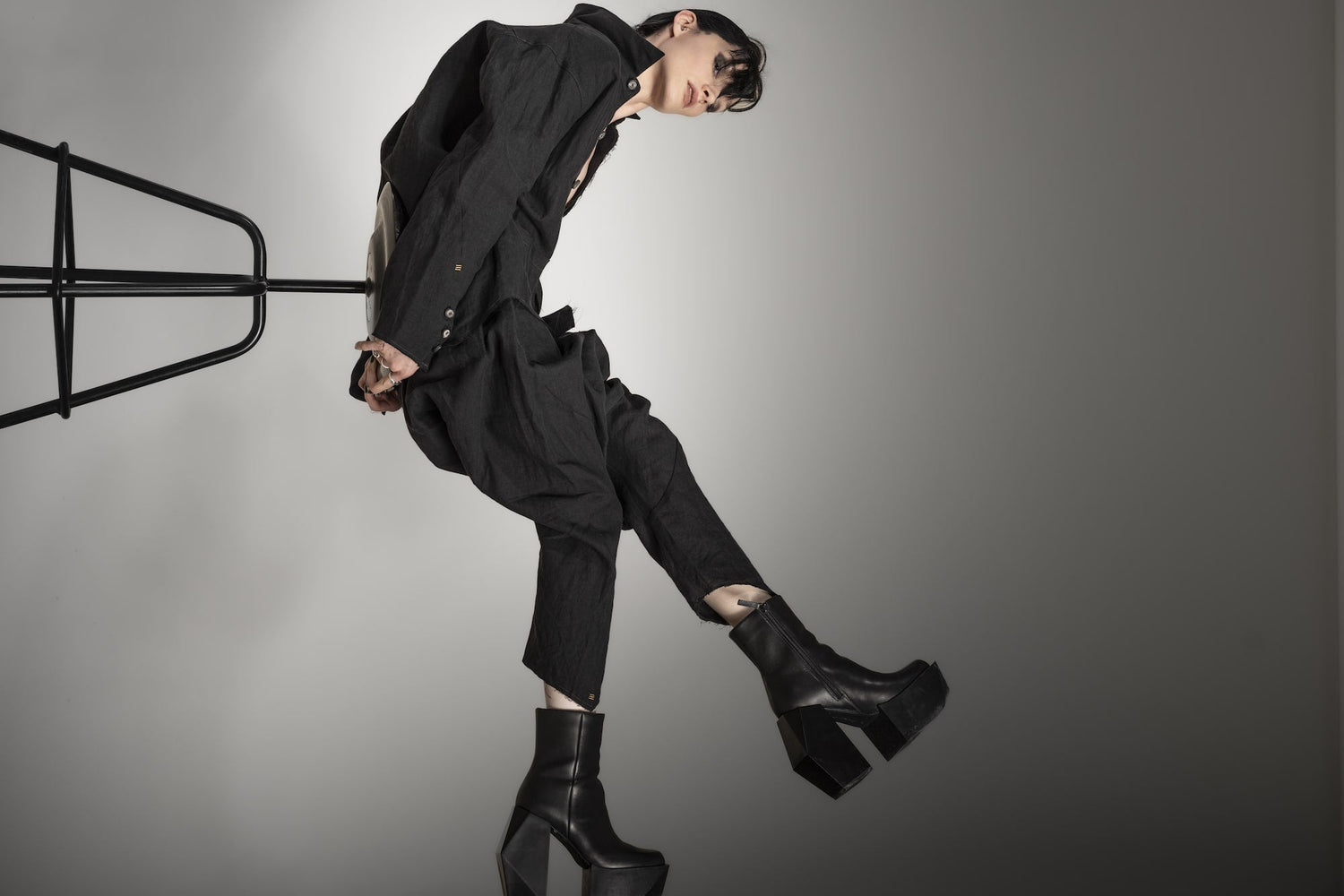Originally hailing from military jargon, "avant-garde" denotes the vanguard, the troops advancing first into battle. In fashion, this forward-thinking mindset manifests through experimental, innovative, and unconventional designs.
"Avant-garde" spans various contexts, from fashion to literature and art, representing more of an attitude than a specific movement. It embodies a fearless pursuit of progress, challenging conventions and norms at every turn.
This article unfolds the essence of avant-garde, offering insights into its origins, significance, and application across different fields. Discover what sets avant-garde fashion apart, how it diverges from phenomena like haute couture and anti-fashion, and its defining characteristics.
Contents:
- What does avant-garde mean?
- Dark avant-garde fashion
- Why does avant-garde fashion favor black?
- What is the difference between dark avant-garde and avant-garde fashion?
- How is Haute Couture different from avant-garde fashion?
- What is the meaning of anti-fashion?
- What is the difference between high fashion and avant-garde fashion?
- What is the difference between fashion and Haute Couture?
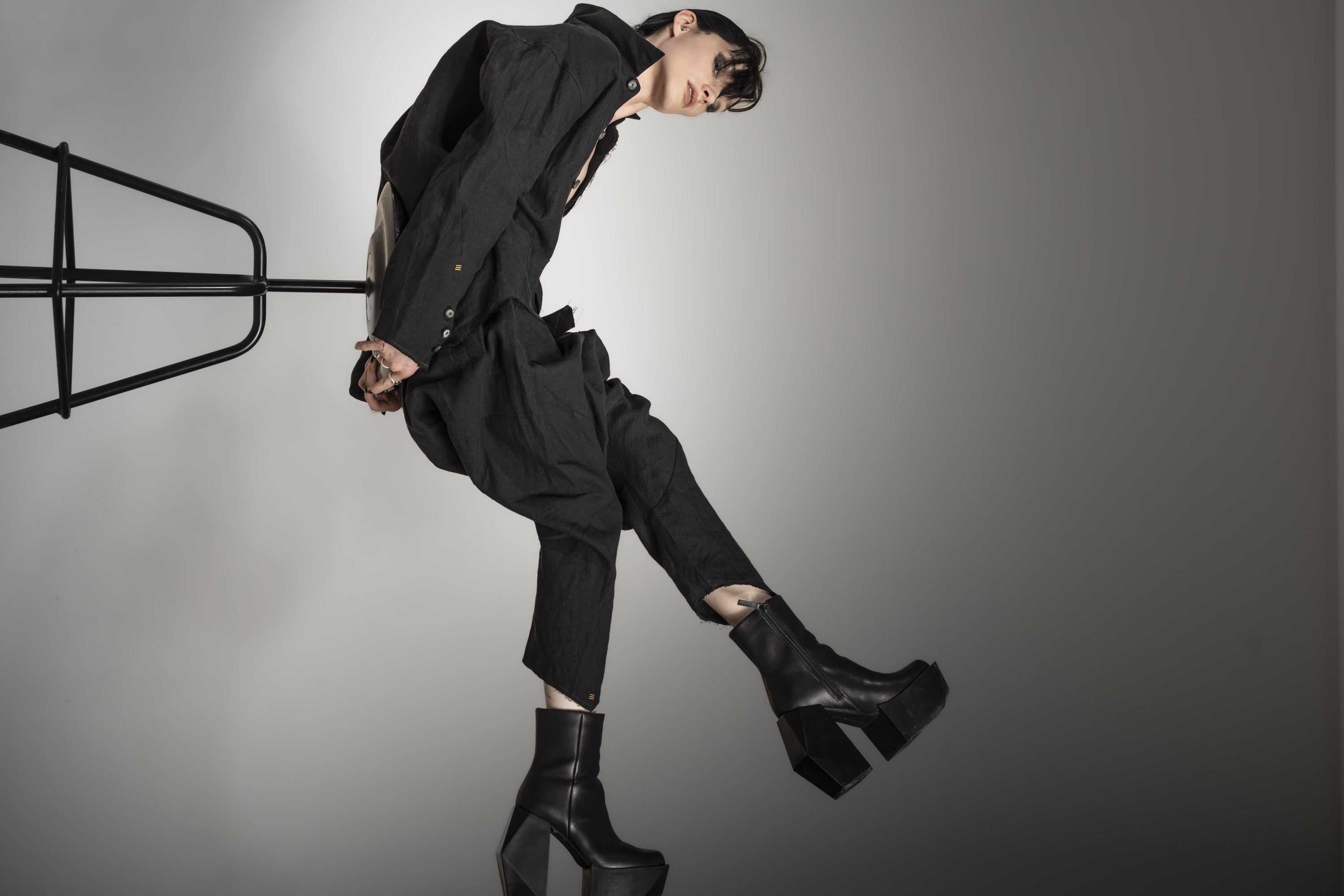
What does avant-garde mean?
Avant-garde, with roots in military terminology as the forefront of an advancing army, today signifies progressive and experimental movements across fashion, art, culture, and literature, challenging traditional boundaries and conventions. Its goal is to forge new perspectives and means of expression, standing in contrast to mainstream currents.
Historically, the avant-garde encompasses a variety of movements from the 19th and 20th centuries that questioned established aesthetic and social norms and committed themselves to progress.
Avant-garde in fashion
Avant-garde fashion transcends mere clothing. Marked by a spirit of experimentation, it features unconventional cuts, innovative materials, and striking textures. It serves as a medium for artistic statements and prognostications, mirroring societal trends while forecasting future ones. Avant-garde fashion notably distances itself from mass production, reflecting aesthetic, philosophical, and cultural currents, and articulating individual freedom.
eigensinnig wien embodies this spirit with its unique avant-garde fashion creations, elevating fashion to the realm of art. The Vienna-based label's style extends beyond the visual, seeking a deeper connection with art, culture, and philosophy. Therefor avant-garde fashion is luxury.
Explore avant-garde fashion inspirations in our "Avant-garde fashion Style Guide".
Additionally, you will find here a style guide for obstinate women , and here a style guide for obstinate men .
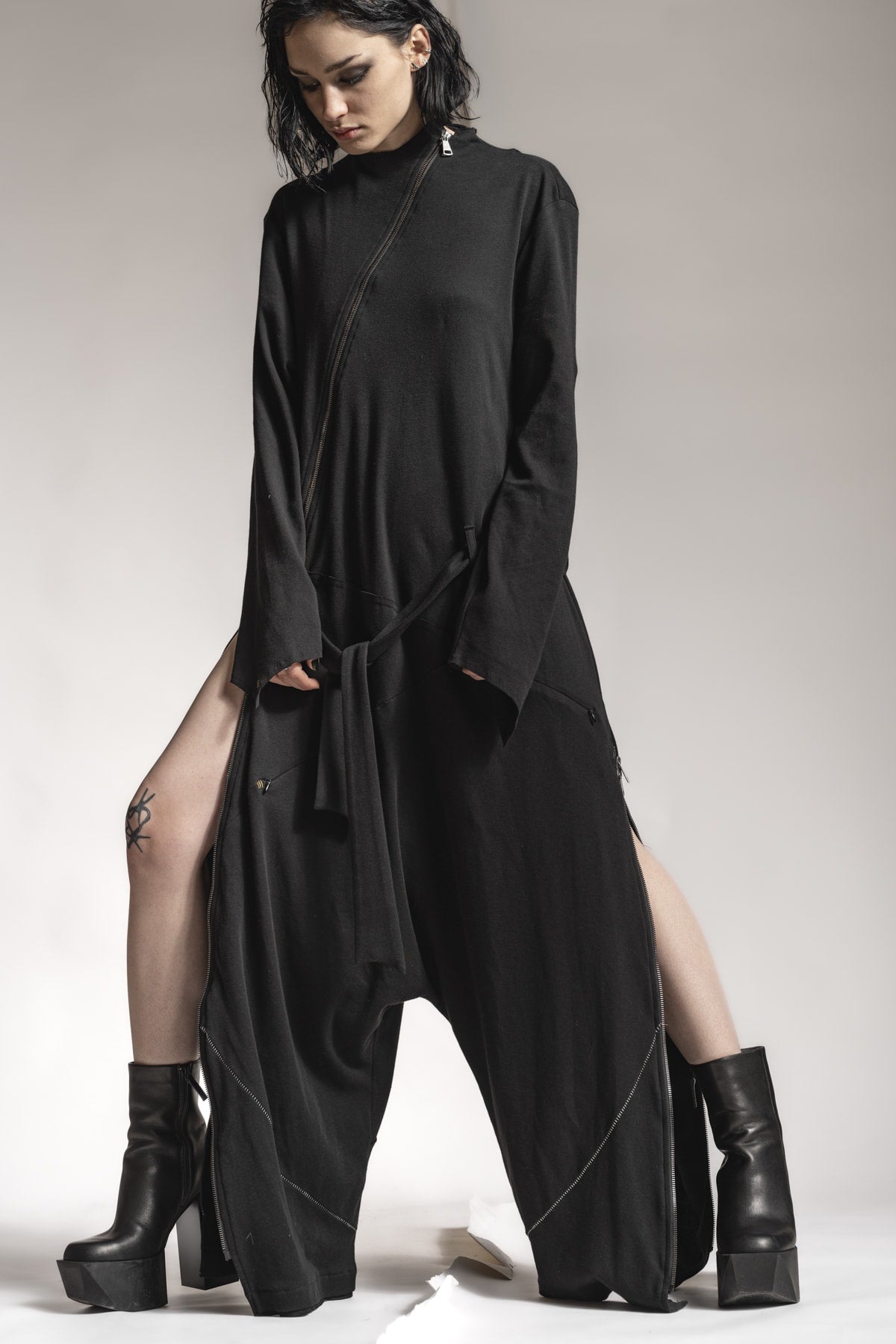 |
Avant-garde fashion transcends mere clothing.
Avant-garde in art
In art, "avant-garde" refers to pioneers and innovators who open new horizons through innovative, experimental, and often unconventional methods. It's a term for artists and movements crossing traditional boundaries to propel forward expressions and ideas ahead of their time.
The avant-garde experiments with form, material, and content, questioning aesthetic conventions. It's a continuous quest for novelty, aiming to reinterpret and reshape the world.
Famous movements include Futurism, celebrating dynamism and technology; Dadaism, with its anti-conventional stance; Surrealism, delving into dreams and the subconscious; and Constructivism and Cubism, revolutionizing the representation of reality through abstract forms. These movements have shattered the confines of traditional art, paving the way for modern and contemporary expressions.
Discover the interplay between art and avant-garde fashion in our feature "What does avant-garde fashion have to do with art?"
Significant avant-garde artists
Marcel Duchamp
Stands as a pivotal figure in the Dada movement, famed for his Ready-mades and provocative art questioning the nature of art itself.
Kazimir Malevich
The founder of Suprematism, employs simple geometric shapes and limited color palettes. Discover his exploration of non-objectivity in our article on the black square.
Piet Mondrian
An abstract art pioneer and De Stijl member, is celebrated for his grid works featuring vertical and horizontal lines in primary colors.
Louise Bourgeois
Is renowned for her large sculptures and installations probing profound existential questions.
Meret Oppenheim
A surrealist artist famous for her object art, notably the fur-covered teacup set, "déjeuner en fourrure".
Marina Abramović
A leading performance artist, is known for her physically and emotionally demanding works exploring the artist-audience relationship.
Avant-garde in music
In music, avant-garde represents movements, composers, and musicians adopting experimental approaches. They break with traditional forms and harmonies, exploring new sounds and structures, often incorporating unconventional instruments or technologies. Avant-garde music aims to expand the limits of musical possibility, creating new modes of expression.
Examples of avant-garde music include Arnold Schoenberg's twelve-tone music, which introduced a new method of tone organization; John Cage's experimental works that incorporated chance into music; and Karlheinz Stockhausen's electronic music, which explored the possibilities of sound synthesis. Genres such as free jazz and the resulting freely improvised music, as well as industrial and noise, established themselves as essential pillars of musical avant-garde after World War II.
 |
Avant-garde is a continuous quest for novelty, aiming to reinterpret and reshape the world.
Avant-garde in literature
Avant-garde literature challenges existing literary forms and conventions. Following Pablo Picasso's advice to "Learn the rules like a pro, so you can break them like an artist", these works often question societal, political, or artistic norms. They experiment with language, structure, and style, frequently provoking debate.
Early 20th-century movements ranged from Surrealism and Dadaism to Futurism, often influenced by significant historical events like the October Revolution. These works carry a radical call for renewal, represented by figures such as Franz Kafka, Gertrude Stein, and James Joyce.
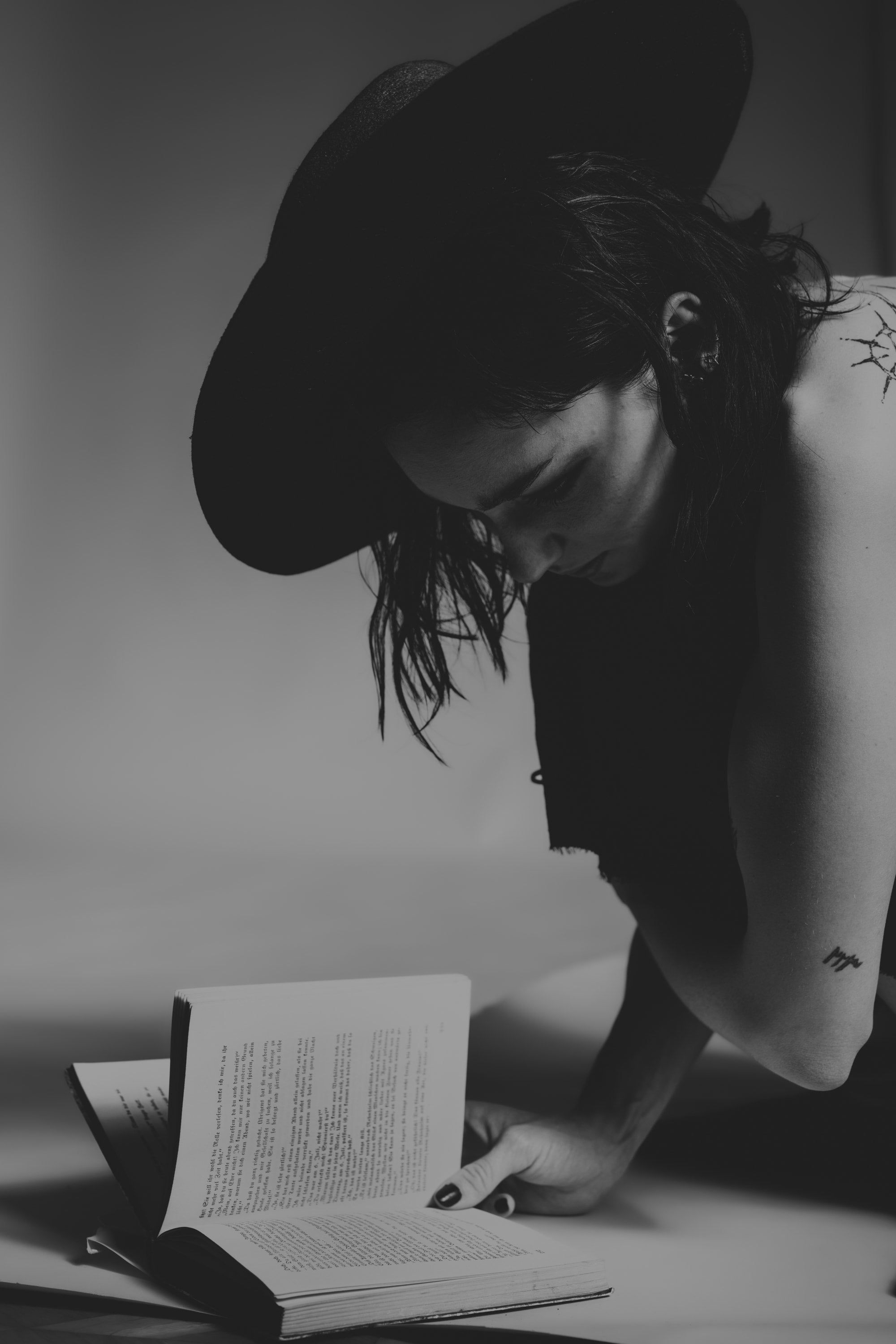
Dark avant-garde fashion
Dark Avant-Garde Fashion, a subgenre within the avant-garde realm, stands out with its enigmatic aesthetic, predominantly showcasing in shades of black and other dark hues. This fashion style delves into ritualistic experimentation with shapes, textures, and materials, aiming to craft an aura of mystery.
It thrives on the interplay between light and shadow, employing unconventional cuts and structures much like its avant-garde counterparts, yet it also incorporates elements from various subcultures. Dark Avant-Garde Fashion transcends mere attire, embodying deeper philosophical and artistic ideas. It transforms fashion into a discourse on identity and existence, blurring the lines between fashion and art, where form and content are inextricably linked.
Dive into the mystique of this dark subgenre in our essay, "Dark fashion: style, design and concept".
Additionally, we feature a blog post on men's suits, including custom-made suits, and a blog post on the oversized suit for women in avant-garde style.
Black is a paradox, a chameleon without colors.
- eigensinnig wien
Why does avant-garde fashion favor black?
Avant-garde fashion frequently turns to black, a color with symbolic depth perfectly encapsulating the avant-garde aesthetic principles. Black signifies elegance, simplicity, and timelessness, enabling stark contrasts and accentuating forms and structures without the distraction of color.
Focusing on structure, texture, and silhouette, black provides visual clarity that highlights innovative cuts and materials in avant-garde fashion. Moreover, it serves as a canvas for expressing individuality and rebelling against conventional fashion ideals.
Discover more about the profoundness of black in our tribute "An ode to the darkest of all colors".
We also provide articles about "All Black outfits for men in dark avant-garde aesthetics" as well as " All Black outfits for women - a Style Guide", as well as our guide to black designer fashion.
Read more about our avant-garde fashion in black in this blog article.

What is the difference between dark avant-garde and avant-garde fashion?
Dark avant-garde fashion sets itself apart from mainstream avant-garde fashion through its specific aesthetic and thematic choices. While avant-garde fashion is celebrated for its experimental, innovative, and often unconventional designs, dark avant-garde fashion delves deeper into dark, sometimes morbid or mystical elements, drawing inspiration from gothic, occult, and other subcultures.
Key differences include:
Color palette
Dark avant-garde fashion predominantly features dark colors, especially black, exploring themes of night, death, melancholy, and the supernatural. In contrast, avant-garde fashion may encompass a wider array of colors, including vibrant and bright hues.
Themes and inspiration
Dark avant-garde draws inspiration from literature, art, philosophy, and music genres like goth, industrial, and deathrock, reflecting in pieces that convey dark, reflective, or provocative messages. Avant-garde fashion, however, derives its inspiration from a broader spectrum of sources and is not necessarily confined to dark or gothic themes.
Materials and textures
Both directions celebrate the use of unusual materials and textures, yet dark avant-garde tends to select materials that support a somber or rugged aesthetic, such as coarse linen, leather, and heavy wool. Avant-garde fashion also experiments with materials but may place more emphasis on technological innovations or unexpected material combinations.
Design
Dark avant-garde fashion often features asymmetrical cuts, layered looks, and complex textures that create a mysterious ambiance. Conversely, avant-garde fashion encompasses a wider variety of designs, from minimalist to highly sculptural, focusing on originality and concept.
How is Haute Couture different from avant-garde fashion?
Haute Couture and avant-garde fashion fundamentally differ in their approach and intention. Haute Couture, or "high sewing", refers to exclusive, bespoke clothing crafted in limited editions by highly skilled tailors in ateliers, emphasizing luxury, perfection, and traditional craftsmanship.
Conversely, avant-garde fashion seeks artistic innovation and experimentation, often with the objective of questioning conventions and forging new expressive avenues in fashion. While Haute Couture celebrates the beauty and artistry of fashion, avant-garde fashion uses clothing as a platform for artistic statements and social commentary, not necessarily tethered to commercial success or traditional aesthetics.
What is the meaning of anti-fashion?
Anti-fashion represents a movement or mindset in fashion that consciously opposes the prevailing trends, norms, and conventions of the fashion industry. It critiques the superficiality, consumerism, and ephemeral nature of contemporary fashion.
This movement eschews the commercial fashion industry and its cycles, questioning the significance and value of fashion in society. Anti-fashion seeks more authentic, individualistic expressions, setting itself apart from mainstream fashion as a critical commentary and counter-culture.
Is avant-garde anti-fashion?
Avant-garde can be viewed as a form of anti-fashion, as it similarly aims to challenge conventional fashion and norms. Both streams criticize commercial trends, prevailing fashion ideals, and mass production, striving for authenticity and individuality.
However, where anti-fashion often signifies a departure from fashion altogether, avant-garde fashion leverages the medium for artistic expression. Despite their shared critique of the fashion industry, they approach their dissent with different intentions and expressions.
Anti-fashion prevails fashion ideals and mass production.
What is the difference between high fashion and avant-garde fashion?
High fashion, synonymous with luxury fashion, signifies exclusive, high-quality clothing that aligns with the latest trends and caters to consumer needs, crafted using traditional artisan techniques. High fashion is associated with renowned designers and fashion houses, while avant-garde represents a direction or philosophy within fashion characterized by a penchant for experimentation, innovation, and unconventionality.
The core difference lies in their intent: High fashion seeks to define luxury within the context of current fashion trends, whereas avant-garde fashion designers push the boundaries of traditional fashion design, using clothing as a form of expression.
What is the difference between fashion and Haute Couture?
Fashion encompasses a wide array of clothing styles and trends popular in society at any given time, from everyday wear to luxury outfits, with accessibility and mass production as its forefront.
Haute Couture, on the other hand, is a specific sector in fashion, distinguished by bespoke, handcrafted garments created for individual clients by highly skilled tailors and designers through intricate processes. These exclusive pieces epitomize luxury and the pinnacle of craftsmanship, standing in stark contrast to the broadly available, often industrially produced fashion.
About the author:
Journalist, copywriter, and author Martha Miklin has been writing and thinking for eigensinnig wien since 2018. Her work gracefully weaves together elements from philosophy, music, literature, art, and psychology, creating a tapestry of thought that is as unique as it is enlightening.
